Calthorpes House
an exciting new world
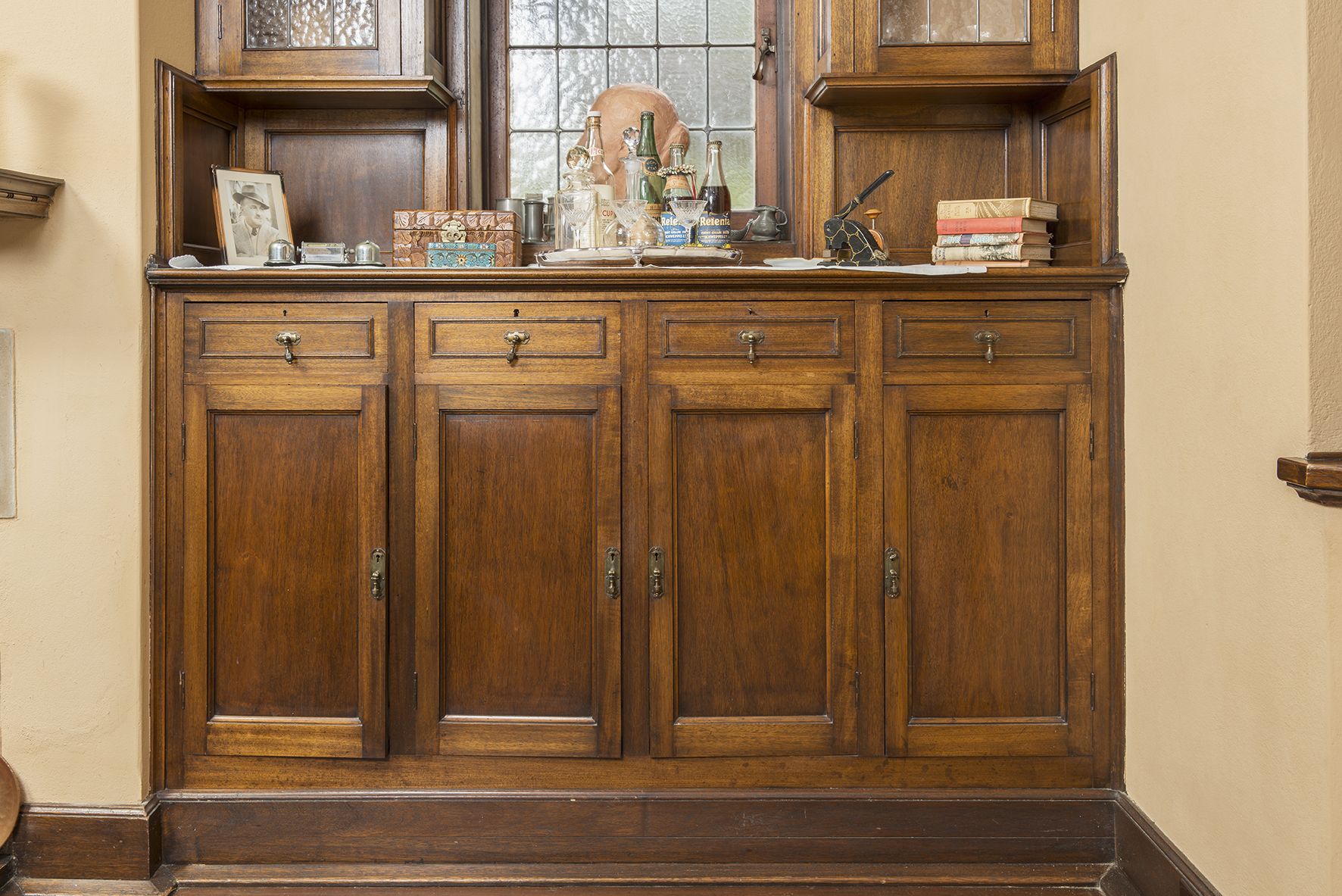
When Della and Harry Calthorpe moved to the corner of Lowe and Rutledge streets, Queanbeyan in 1924, they may have had every expectation that their newly built house, with its modern electric light bulbs and piped water indoors, would be their forever home, a place where their daughters would happily grow up.

Del and Dawn Calthorpe
Del and Dawn Calthorpe
Yet fate, and a sense there was something brighter on the horizon, would take their lives in an altogether different direction - and their personal histories would soon become linked with that of the nation's fledgling capital in the recently created Federal Capital Territory.
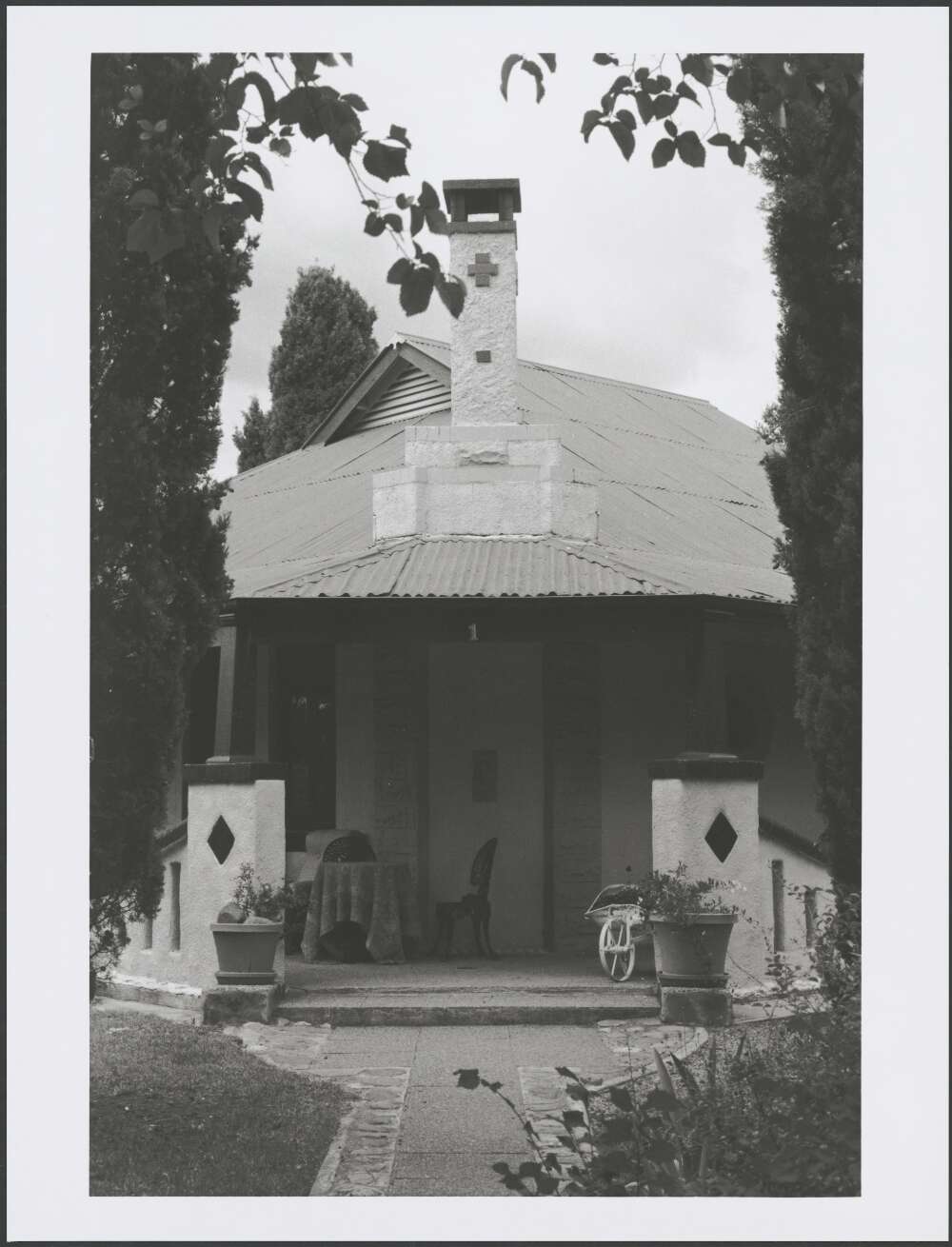
The Calthorpes' Queanbeyan house, No 1 Lowe Street, Queanbeyan, photograph by Brendan Kelson, courtesy National Library of Australia, nla.obj-143080265
The Calthorpes' Queanbeyan house, No 1 Lowe Street, Queanbeyan, photograph by Brendan Kelson, courtesy National Library of Australia, nla.obj-143080265
Dell, who was born Della Ludvigsen in Sydney, was named after the Delaware River near where her American mother was born. Her father was from Norway.

Della Calthorpe
Della Calthorpe
She was a city girl who had never ventured further than Katoomba in the Blue Mountains but in 1916, she made a trip to Maitland in the Hunter Valley to help her sister and her new born baby.
It was here at a musical evening at a friend’s place that she met Harry Calthorpe, a country boy from Cootamundra.
Harry had just returned from Gallipoli where, as part of the Light Horse Regiment, he had been injured by an exploding shell. Still an enlisted soldier, he was working as part of the recruiting campaign in the Goulburn-Braidwood-Yass-Queanbeyan area.
Love blossomed and Della and Harry married in Sydney in August 1917.
Harry had also fallen in love with the Monaro region and he scraped together all his savings to purchase a stock and station agency in Queanbeyan with Robert Everson.

Harry Calthorpe on left with the Woodger brothers Thomas and Bill (courtesy Mildenhall Collection)
Harry Calthorpe on left with the Woodger brothers Thomas and Bill (courtesy Mildenhall Collection)
The couple moved briefly to Braidwood and then on to Queanbeyan into the newly built house which at the time was one of the most modern in town.
They had welcomed their first daughter, Del in 1918 - a whopping 14 pound baby. Their second daughter, Allison Dawn, was born in 1923, just weeks before they moved into their Queanbeyan home.
She would be known by her middle name, aptly chosen after the magnificent dawn that followed her birth.

Harry by this time had entered into a partnership with William and Tom Woodger as auctioneers and stock and station agents in Queanbeyan and the firm became Woodgers and Calthorpe in 1920.
Alongside Sydney firm Richardson and Wrench, Woodgers and Calthorpe auctioned the first group of land leases for the new capital in 1924.

Woodgers and Calthorpe poster for the auction of residential land sites in Canberra, 29 May 1926, courtesy National Library of Australia, nla.obj-232855374
Woodgers and Calthorpe poster for the auction of residential land sites in Canberra, 29 May 1926, courtesy National Library of Australia, nla.obj-232855374
The ideals of Walter and Marion Griffin’s winning design must have seemed a distant reality back then, but Della was lured by this promise of Canberra.
After only one year in the modern new house in Queanbeyan, she told her husband, ‘Harry, if there is to be a real city in the paddocks over in the Federal Capital, that is where I’d like to be’.
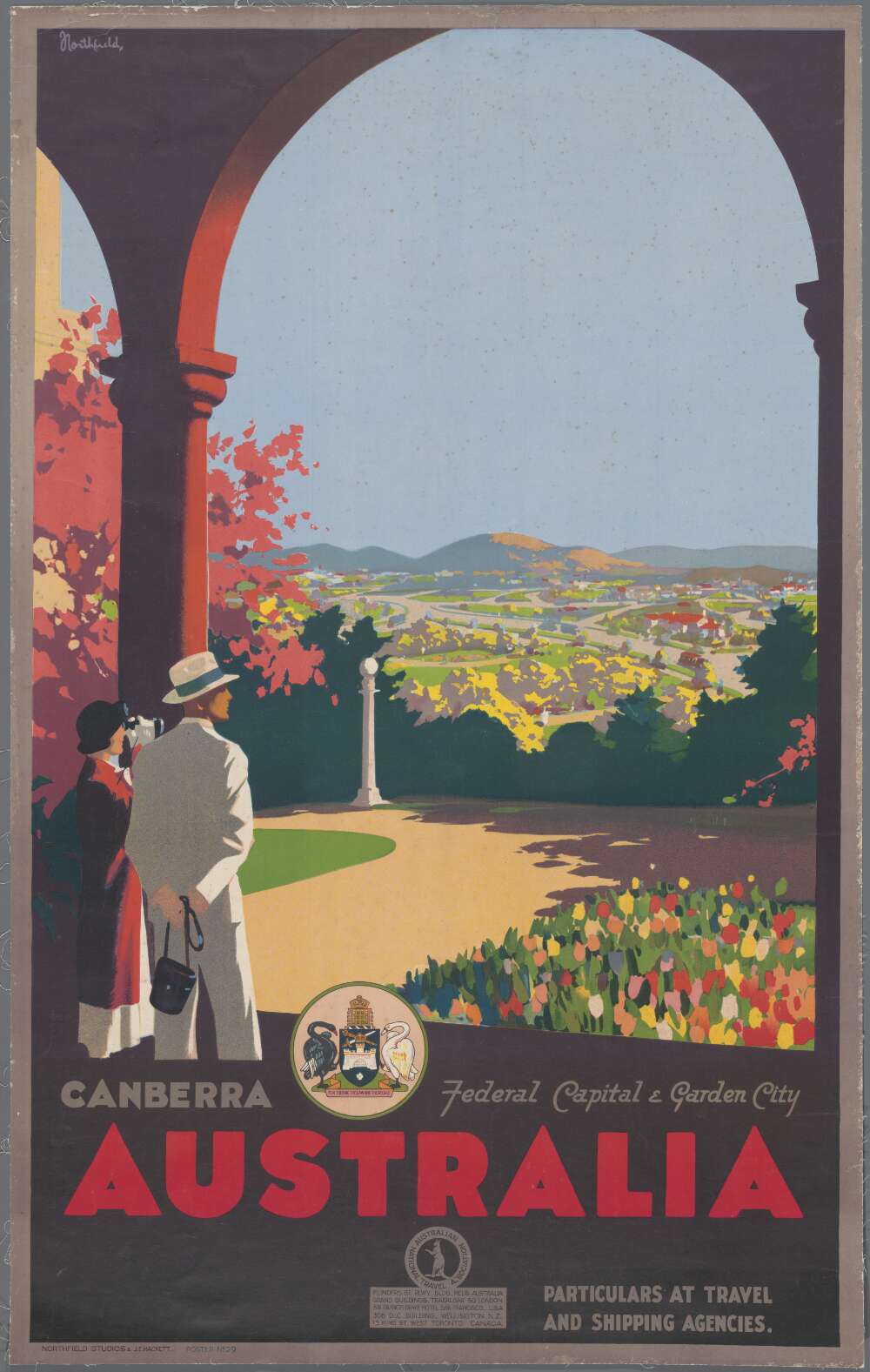
Canberra, Federal Capital & Garden City, Australia, poster designed by James Northfield for Australian National Travel Association, 1930, courtesy National Library of Australia, nla.obj-136809850
Canberra, Federal Capital & Garden City, Australia, poster designed by James Northfield for Australian National Travel Association, 1930, courtesy National Library of Australia, nla.obj-136809850

Harry chose a block at 24 Mugga Way in Red Hill, in an area planned for Canberra’s larger homes. Dawn, now aged 99, recalls the uninterrupted view across the Limestone Plains from the front garden, and Red Hill rising behind.
The land purchase came with the condition that their house had to be built within two years, and to a minimum value of £1,200. The average weekly wage at the time was £100.
The Calthorpes' choice of architect was Oakley and Parkes, the same firm who designed the Prime Minister's Lodge.
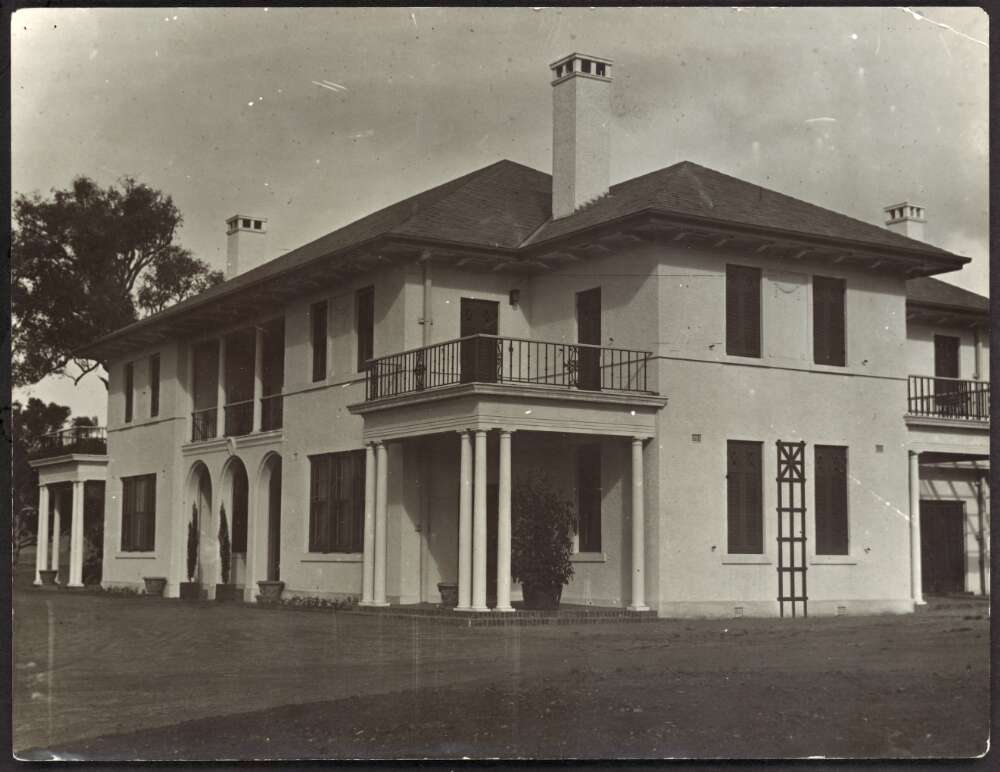
Prime Minister's Lodge, Canberra, 1927, courtesy National Library of Australia, nla.obj-142878321
Prime Minister's Lodge, Canberra, 1927, courtesy National Library of Australia, nla.obj-142878321
The firm had also been selected by the Federal Capital Commission to design houses for public servants and their families relocating to Canberra.
Oakley and Parkes' cottage designs were influenced by the Spanish Mission, Leslie Wilkinson’s Mediterranean style and Hardy Wilson’s Colonial Revival, and created the bungalow character of Canberra’s inner south.
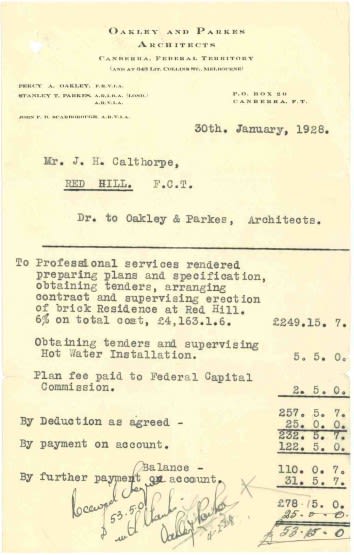
Receipt from Oakley and Parkes for services rendered, 1929, ACT Historic Places collection
Receipt from Oakley and Parkes for services rendered, 1929, ACT Historic Places collection
One of the most popular designs was known as ‘FCC 9’, which like Calthorpes House, had roughcast walls and Tudor architectural influences in its porch and chimney.
The Calthorpes’ new home was finished in 1927 – the same year that Parliament House was opened by the Duke and Duchess of York.

Old Parliament House opening ceremony, Canberra, 1927, courtesy of National Library of Australia, nla.obj-142144306
Old Parliament House opening ceremony, Canberra, 1927, courtesy of National Library of Australia, nla.obj-142144306
On moving day Dawn remembered, 'Mum was already there having put a casserole in the oven and I arrived with dad, my older sister Del, our pet canary, Tiddles the cat and Johnson our cattle dog.'

Driving from Queanbeyan to Canberra, Dawn recalled that all they could see were some sheep, fences and a couple of farm houses.
Their car was the only one on the road.
And her father said ‘One day, all this will be covered by the most beautiful city in the world’.
So how did Della Calthorpe furnish her beautiful new home? As a very new city, retail therapy in Canberra was limited.
A small retail area grew in Manuka and Eastlake – now known as the suburbs of Griffith and Kingston - and construction of the iconic Sydney Melbourne Buildings in Civic started in 1926.

The buildings at London Circuit, Canberra, 1926-1927, photograph by Charles Henry Taylor, courtesy of National Library of Australia, nla.obj-147018583
The buildings at London Circuit, Canberra, 1926-1927, photograph by Charles Henry Taylor, courtesy of National Library of Australia, nla.obj-147018583
The first retailers to open included Bill Prowse’s hairdressing salon and tobacconist shop and RJ Dunne’s newsagency and stationary business.
The Blue Moon Café opened in 1928, offering milk shakes and cakes as well as providing meals at all hours and catering for engagement parties and weddings.
The Calthorpes didn’t throw out all their furniture when they moved to Canberra.
Some furniture was brought over from the Queanbeyan house. This included the lounge suite and pianola in the sitting room, the breakfast room furniture and the double bed and dressing table that become the bedroom furniture for their eldest daughter, Del.
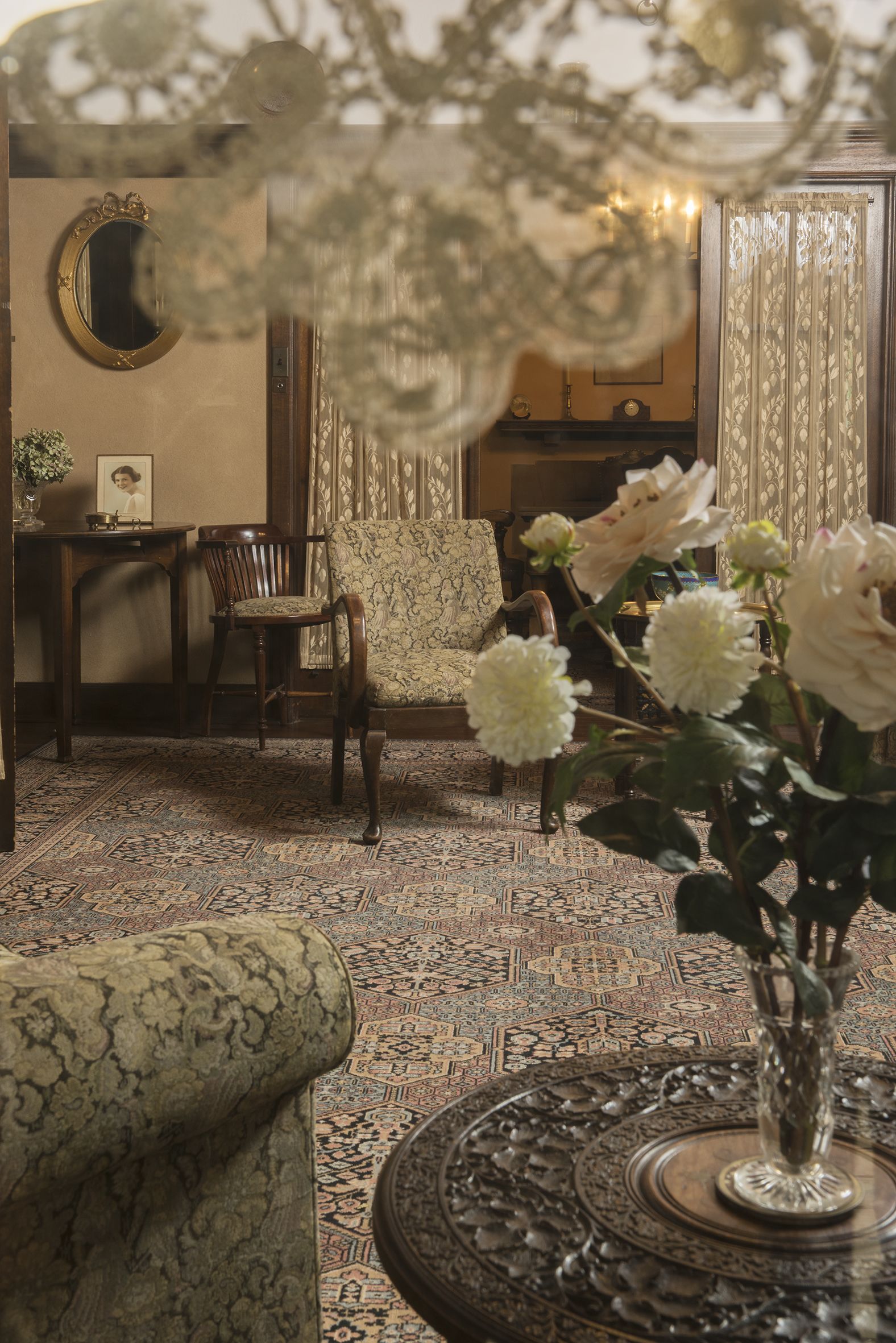
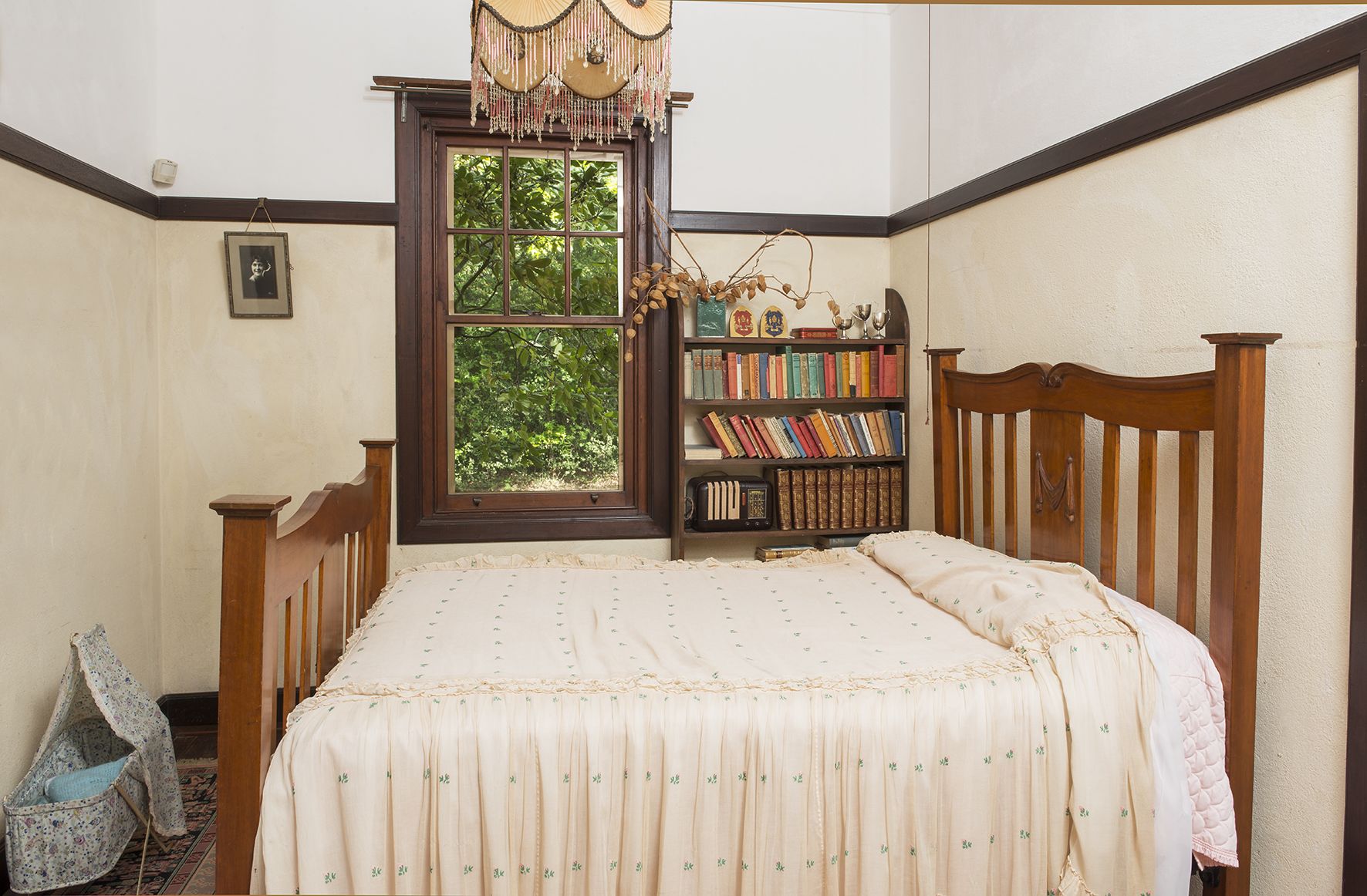
Del's room with the bed that came from the Calthorpes' former house in Queanbeyan, NSW
Del's room with the bed that came from the Calthorpes' former house in Queanbeyan, NSW

The matching dresser which also came from the Queanbeyan house
The matching dresser which also came from the Queanbeyan house
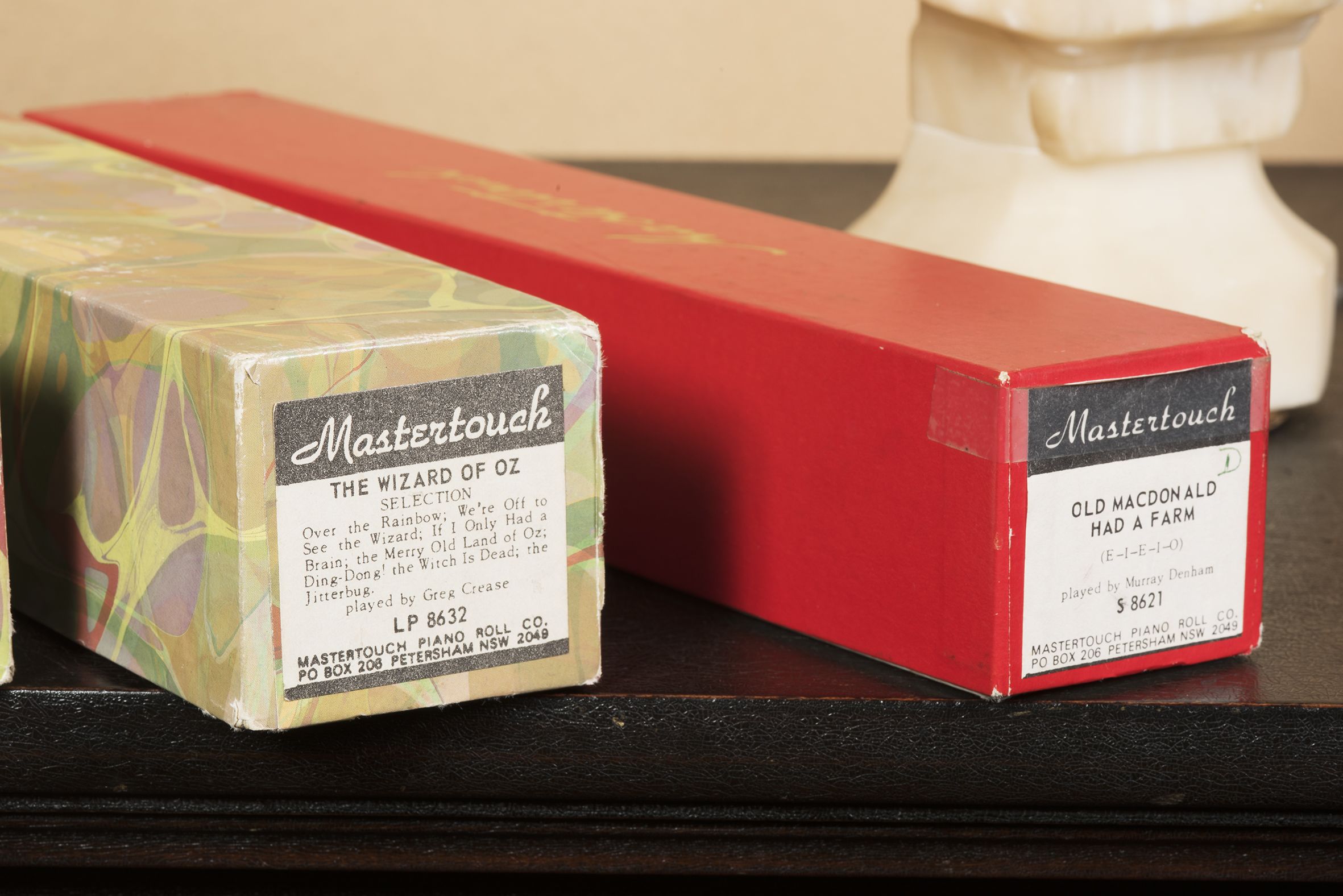
The Calthorpes had a large collection of pianola rolls
The Calthorpes had a large collection of pianola rolls

The much loved pianola that entertained the family in the sitting room
The much loved pianola that entertained the family in the sitting room
But Mrs Calthorpe also wanted new furnishings for her dream home.
And while the established town of Queanbeyan continued to be the primary retail area for Canberrans, for larger and special items, the new residents for this planned capital relied on trips to Melbourne or Sydney - and mail order catalogues from favoured retailers such as Farmers who supplied important items such as school uniforms.
Buoyed by cheaper postal services and increased manufacturing, department stores in Europe and North America began publishing illustrated catalogues from the mid-19th century. This was adopted by Australian retailers who were particularly keen on attracting customers outside the city limits.

Postcard advertising Anthony Hordern & Sons emporium, Sydney, NSW, circa 1905, courtesy State Library Victoria
Postcard advertising Anthony Hordern & Sons emporium, Sydney, NSW, circa 1905, courtesy State Library Victoria
In Sydney, Anthony Hordern's issued its first illustrated catalogue in 1884 and from a small booklet of 14 pages it had expanded to 600 pages by the turn of the century, becoming something of a bible for country dwellers.
David Jones, which grew from a small store in 1838, to a large department store on George Street in Sydney in 1887, also released its first mail order catalogue in 1890.

David Jones' Spring and Summer mail order catalogue 1925-6, courtesy State Library of NSW, FL3761508
David Jones' Spring and Summer mail order catalogue 1925-6, courtesy State Library of NSW, FL3761508
And Grace Bros, which had started as a drapery store in 1885 and expanded into a five storey department store at Broadway in 1904, began publishing its monthly catalogue in 1907, called the Model Trader.
By 1909, Grace Bros was posting 12,000 copies of the Model Trader per month to customers.
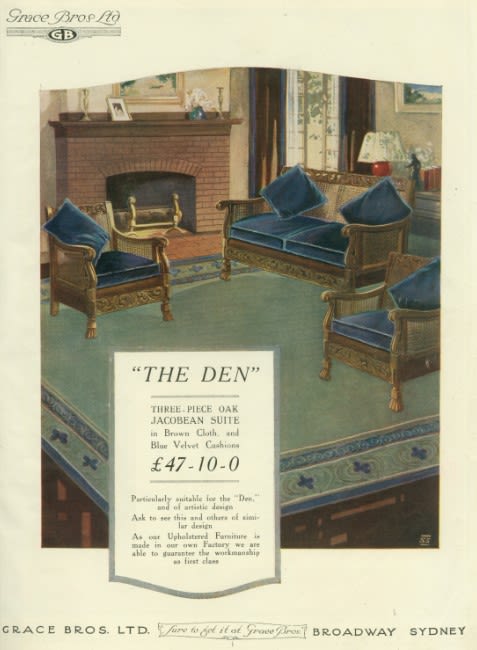
Illustration from Furniture by Grace Bros, Sydney, 1923, courtesy Caroline Simpson Collection, Museums of History NSW, TCQ 749.20492 GRA
Illustration from Furniture by Grace Bros, Sydney, 1923, courtesy Caroline Simpson Collection, Museums of History NSW, TCQ 749.20492 GRA
For people who did not live near cities these catalogues were their lifeline to the latest fashions and furnishings.
They were beautifully illustrated - and by the 1920s sometimes printed in colour - selling aspirations and dreams through shoes, dresses, under garments and furniture.

A garden party dress worn by Della Calthorpe, ACT Historic Places collection
A garden party dress worn by Della Calthorpe, ACT Historic Places collection
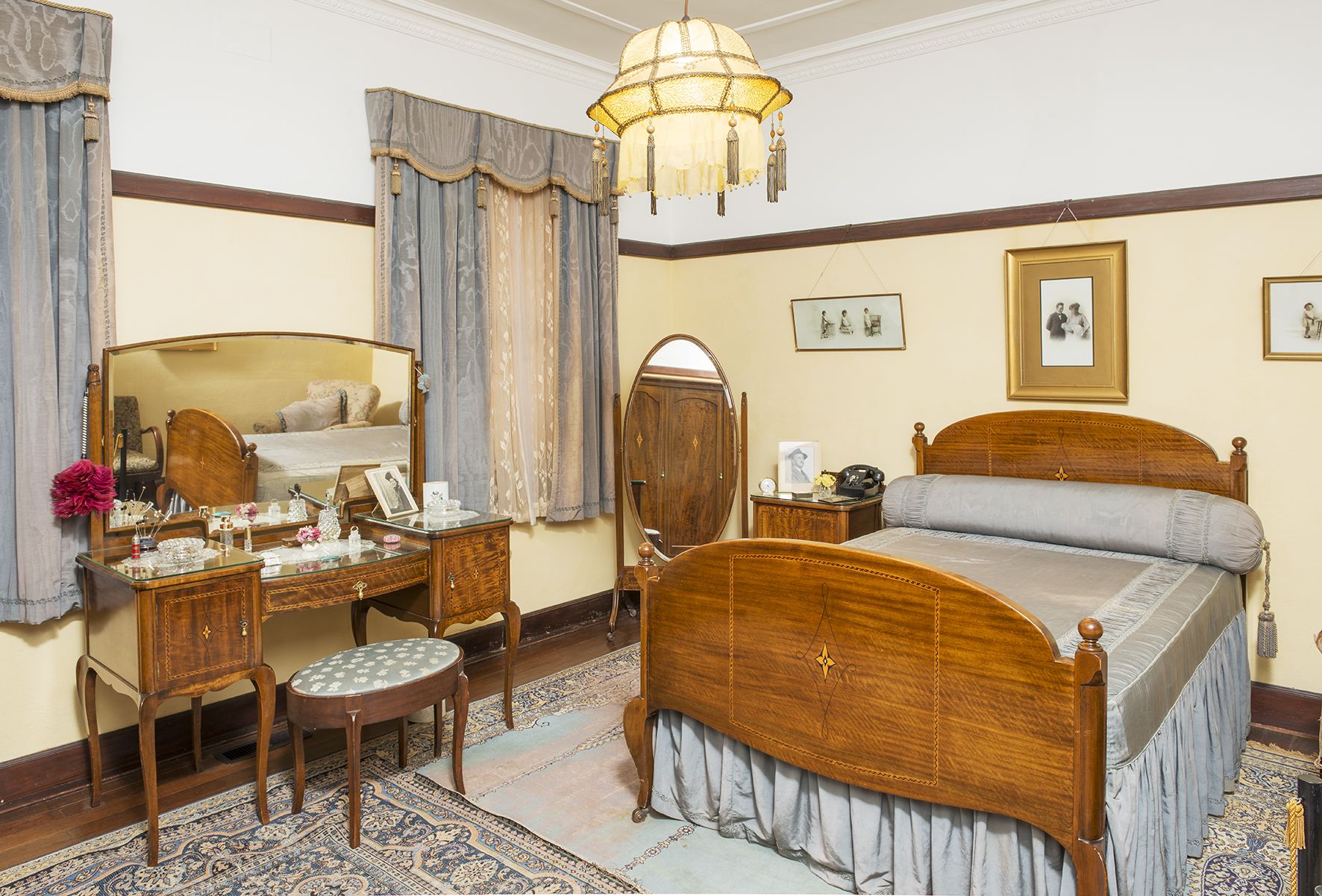
So when Mrs Calthorpe wanted to furnish her new home she turned to these catalogues, in particular the prestigious Beard Watson and Co.
This company opened in Sydney in 1889, and initially sold soft furnishings like carpets, floor coverings and furnishing fabric.
In 1902, Beard Watson acquired a furniture manufacturing business, and the company grew into a high-class home furnishing retailer.
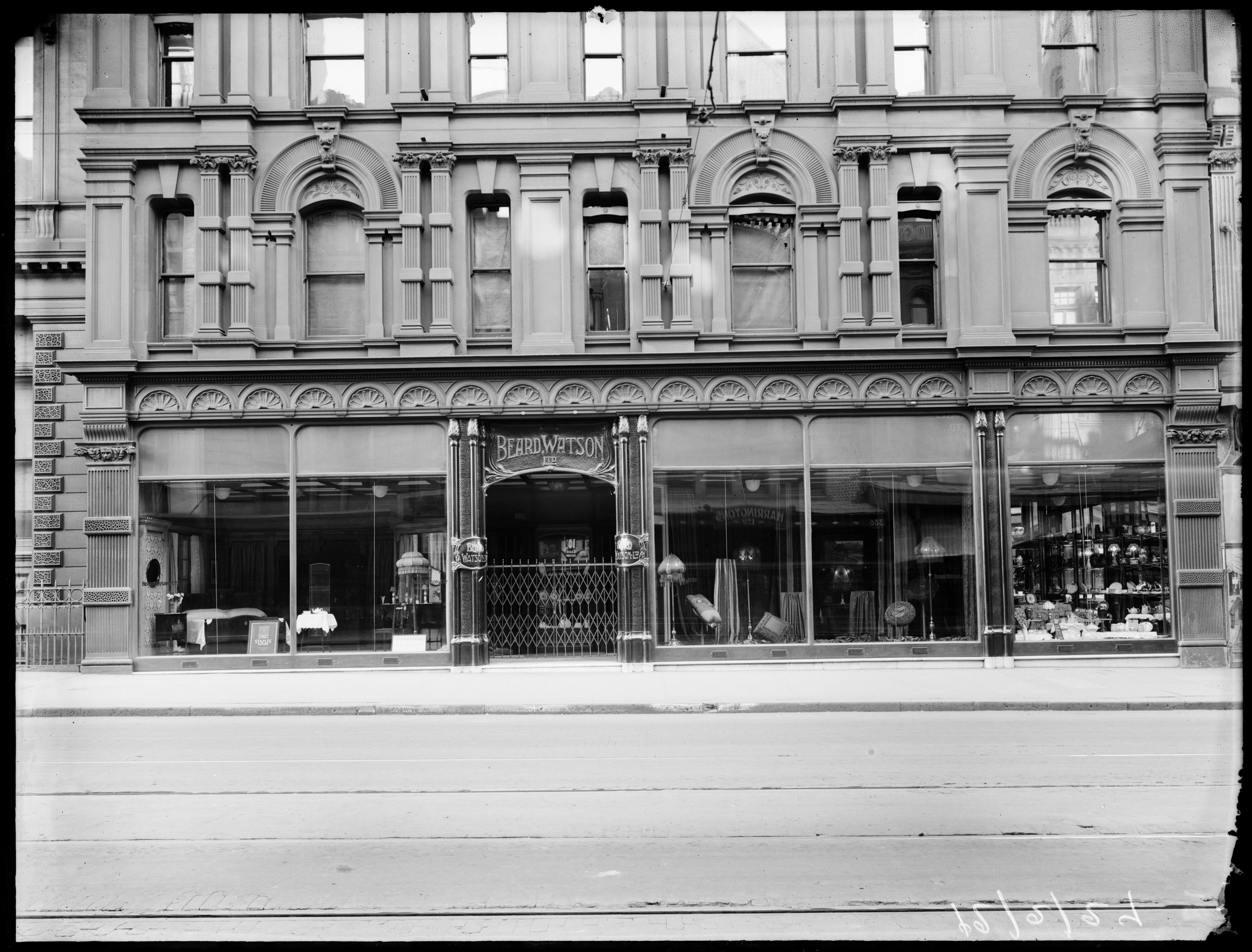
Beard Watson & Co Ltd, George Street, 1927, from the collection of Arthur Ernest Foster negatives, courtesy Mitchell Library, State Library of NSW, FL379820
Beard Watson & Co Ltd, George Street, 1927, from the collection of Arthur Ernest Foster negatives, courtesy Mitchell Library, State Library of NSW, FL379820
In 1906 it expanded its retail space on George Street, creating a five storey store that employed 130 employees and displayed 33 model rooms, from dining rooms to drawing rooms, kitchens and bedrooms.
On the top floor of the store was a workshop for making curtains, valances and furnishing drapery, and sewing carpets into rugs.
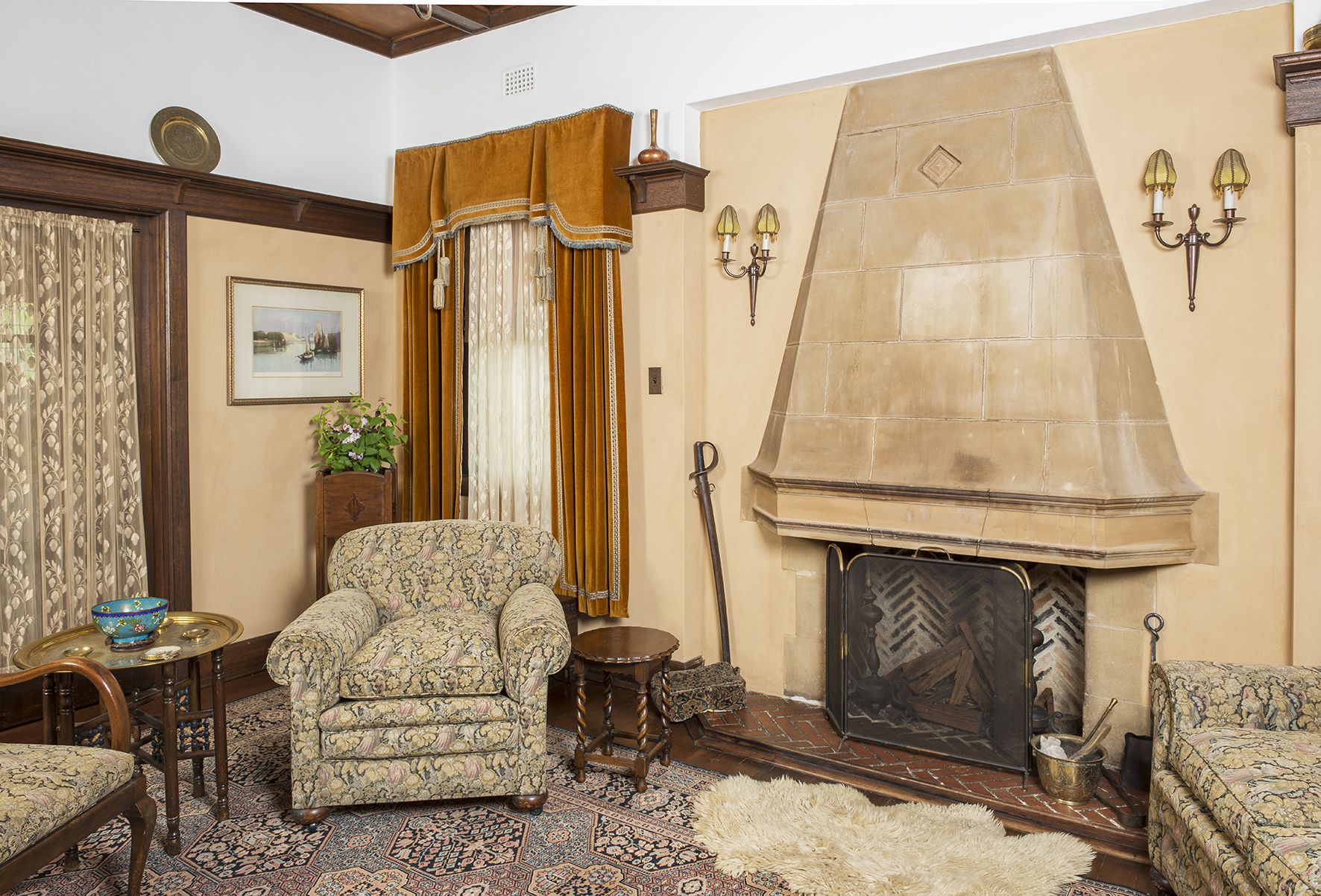
The company manufactured its own furniture and employed more than 150 workers in its Redfern workshop at the time. In 1917, The Australian Manufacturer extolled that the “furniture it sells, and particularly the furniture it produces, is distinguished at once for its good workmanship and for its artistic beauty”.
From the 1920s, Beard Watson expanded into glassware, dinnerware and ceramics. It advertised through the prestigious magazine, The Home, in the 1920s and 30s, and supplied furnishings for a number of artist-designed modern rooms at the celebrated Burdekin House exhibition in 1929.
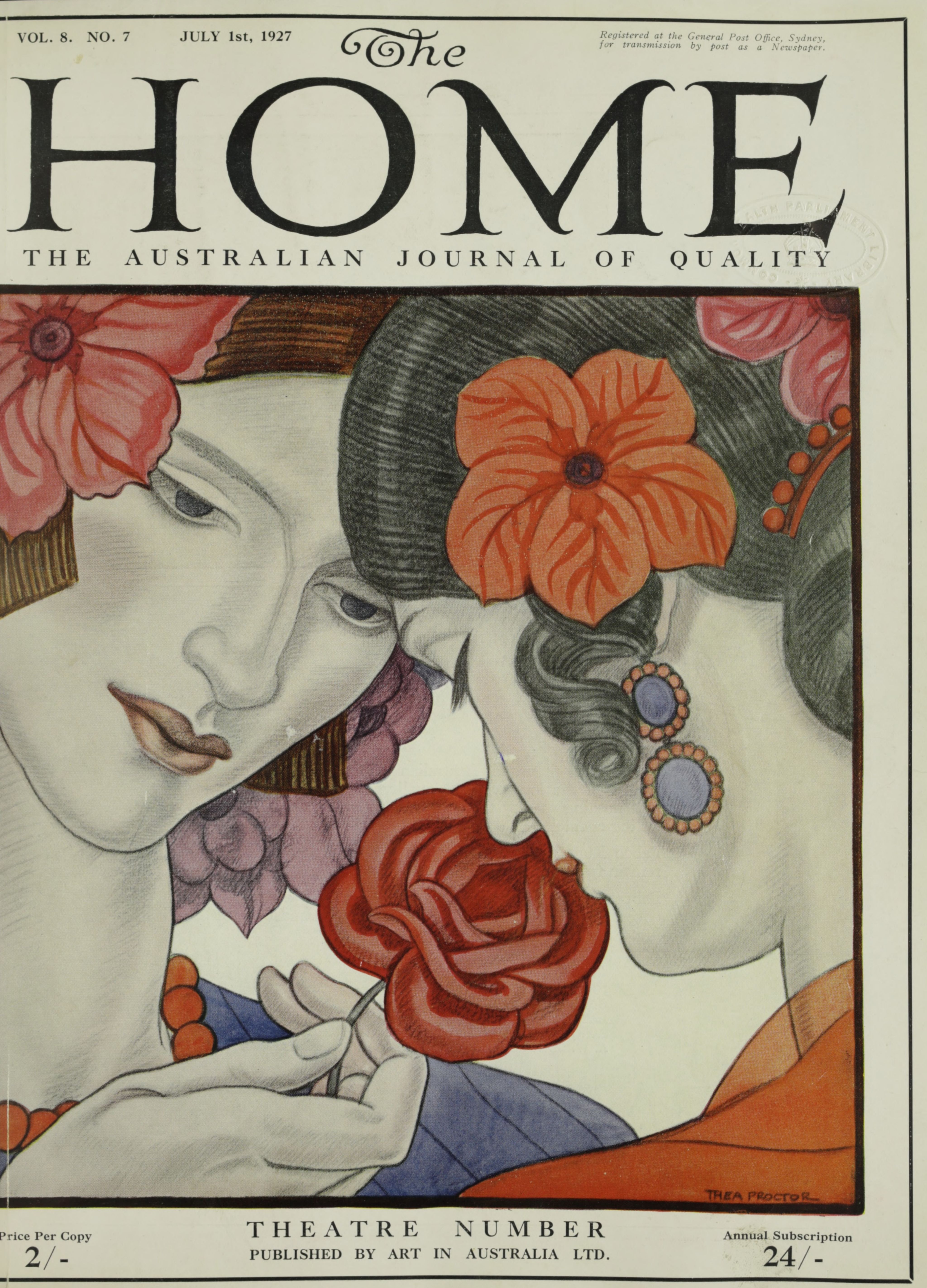
Cover by Thea Proctor for The Home, July 1927, courtesy National Library of Australia, nla.obj-381738012, copyright Art Gallery of NSW
Cover by Thea Proctor for The Home, July 1927, courtesy National Library of Australia, nla.obj-381738012, copyright Art Gallery of NSW
Like the other department stores, Beard Watson published catalogues to advertise its home furnishings.
Buying Beard Watson and Co furniture was about buying prestige.
So it is not surprising that Mrs Calthorpe, the wife of a now successful land agent in the new Federal Capital, would turn to Beard Watson to furnish her architecturally designed house – don’t forget, the same architects who designed the Prime Minister’s Lodge.
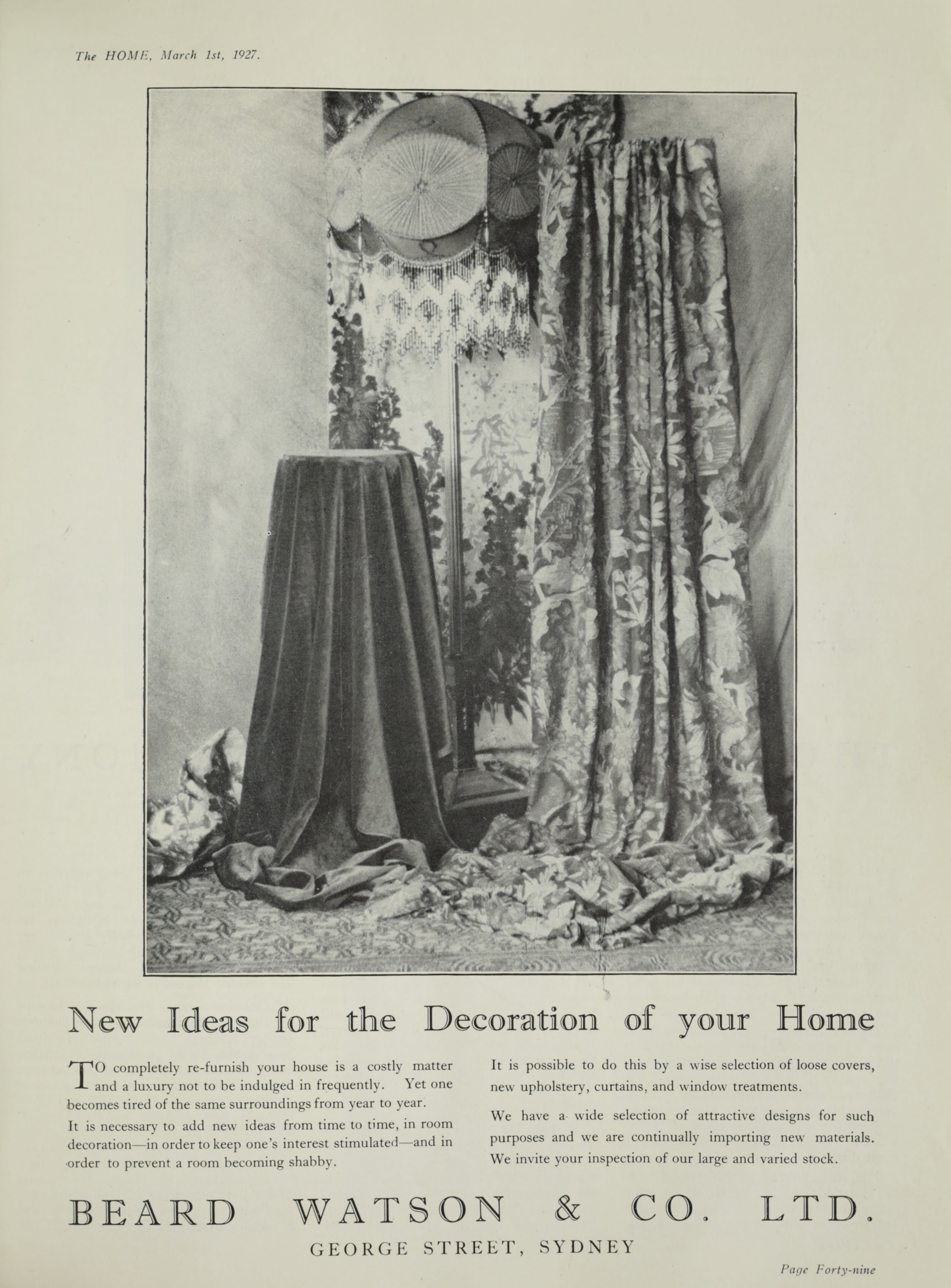
Beard Watson and Co advertisement in The Home, March 1927, courtesy National Library of Australia, nla.obj-381737935
Beard Watson and Co advertisement in The Home, March 1927, courtesy National Library of Australia, nla.obj-381737935

Beard Watson and Co advertisement in The Home, February 1927, courtesy National Library of Australia, nla.obj-381737919
Beard Watson and Co advertisement in The Home, February 1927, courtesy National Library of Australia, nla.obj-381737919
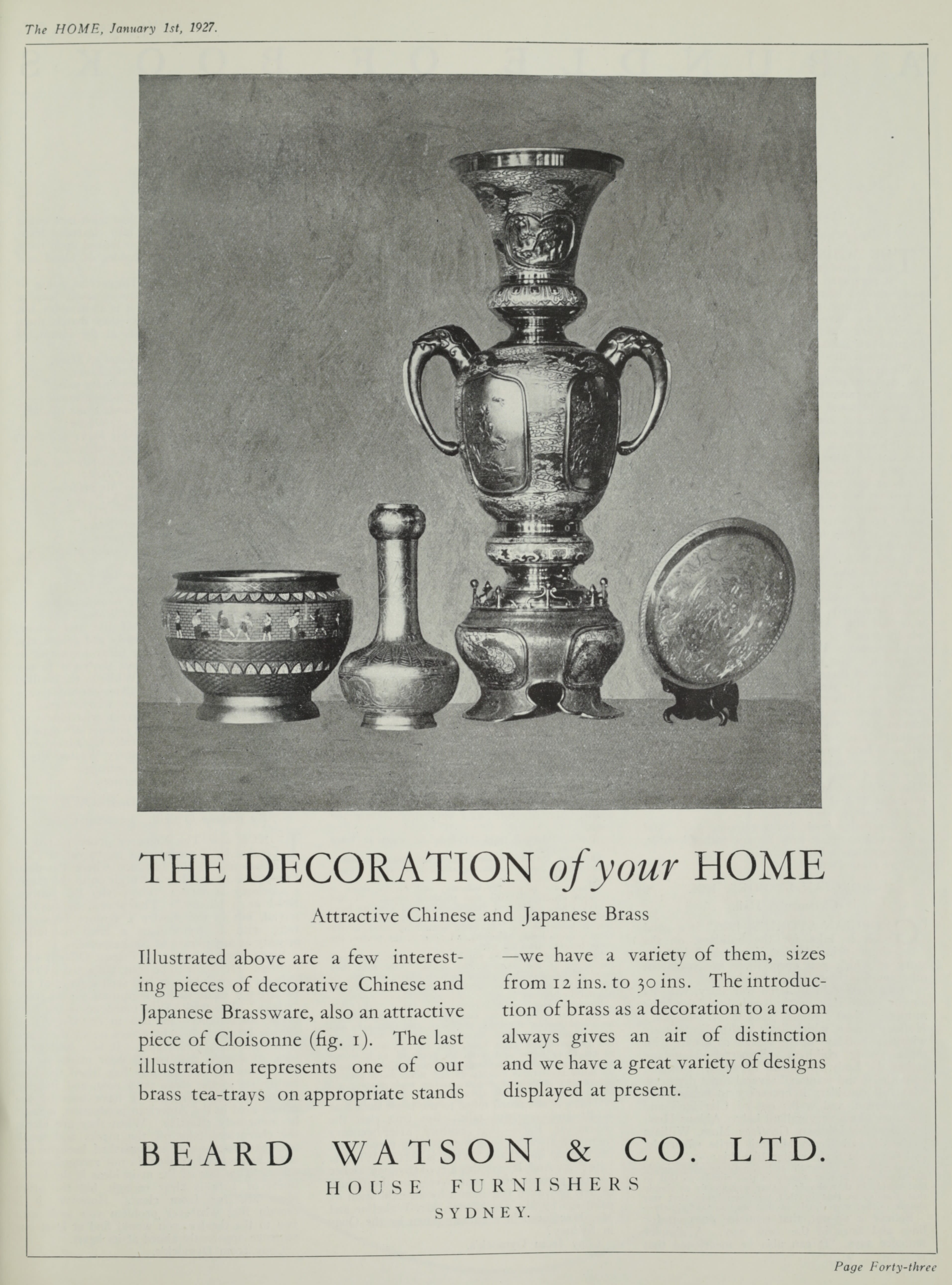
Beard Watson and Co advertisment in The Home, January 1927, courtesy National Library of Australia, nla.obj-381737893
Beard Watson and Co advertisment in The Home, January 1927, courtesy National Library of Australia, nla.obj-381737893
While we don’t have the Beard Watson catalogue that Mrs Calthorpe used, we do have the receipts from the store showing us what she purchased.
She travelled to Sydney in July 1927, taking a copy of the architectural drawings of her house and over two days the receipts show that she purchased a range of furniture, fabrics for curtains, carpets, glass and dinnerware.

Mrs Calthorpes' receipt from Beard Watson and Co, ACT Historic Places collection
Mrs Calthorpes' receipt from Beard Watson and Co, ACT Historic Places collection
This included a Jacobean hall table and pedestal palm stand in the hallway, the three-piece maple bedroom suites and bed stands and the Chippendale style dining suite with the extendable table.
Mrs Calthorpe also purchased liqueur and cocktail glasses, dinner plates and meat dishes.
And she selected fabrics for her tasselled trimmed curtains and window coverings, linoleum flooring, blinds, carpets and lampshades.
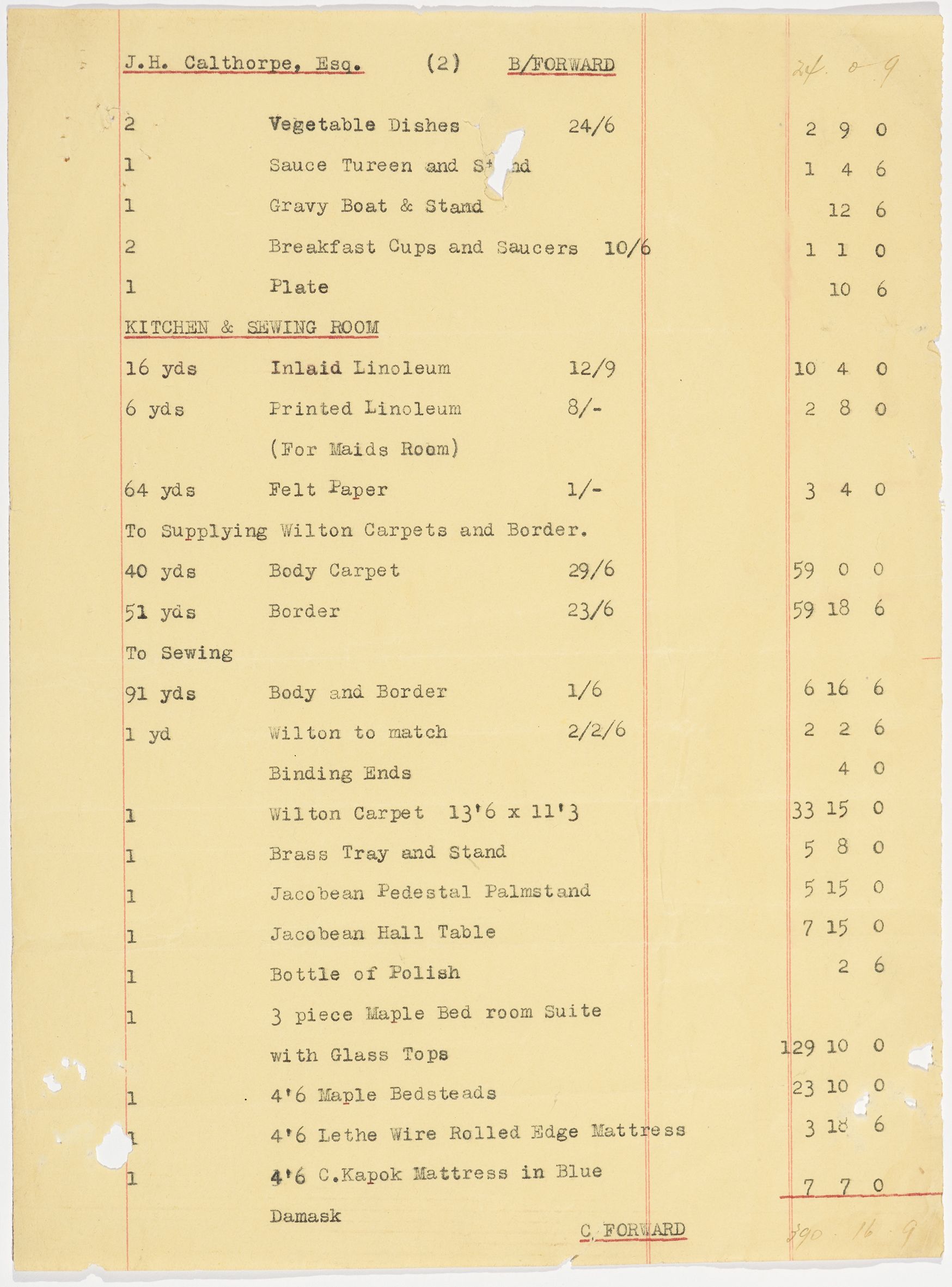
Beard Watson and Co receipt, page 2, ACT Historic Places collection
Beard Watson and Co receipt, page 2, ACT Historic Places collection
In total, Mrs Calthorpe spent £705 19s 6p – a substantial amount of money. All the items purchased were on sale, with a 12.5% discount possibly explaining the eclectic range of period styles she purchased.
Staff from Beard Watson travelled to Canberra to deliver the furniture, lay the carpets and linoleum, and fit the curtains.
It was a considerable purchase.
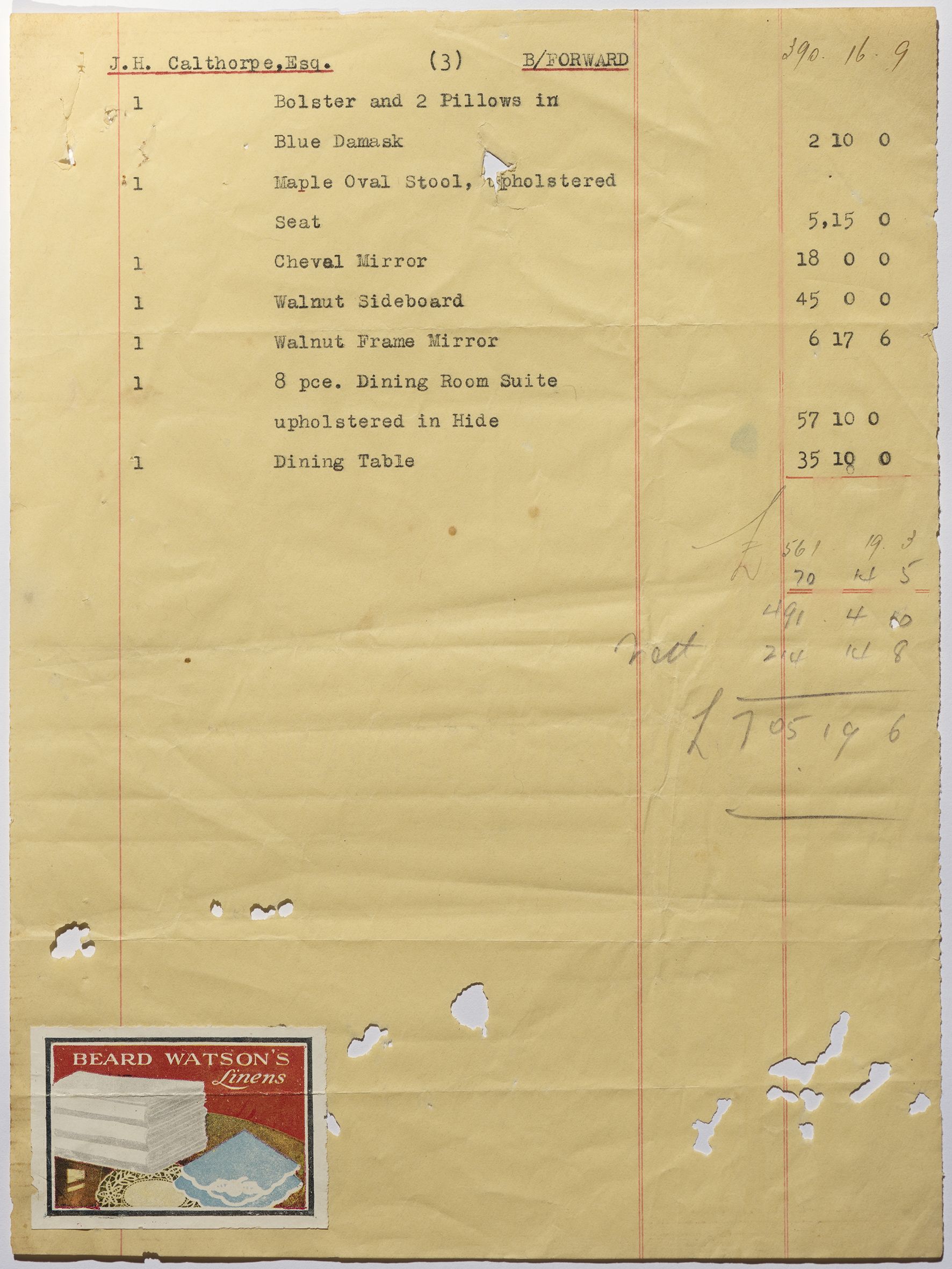
Beard Watson and Co receipt, page 3, ACT Historic Places collection
Beard Watson and Co receipt, page 3, ACT Historic Places collection
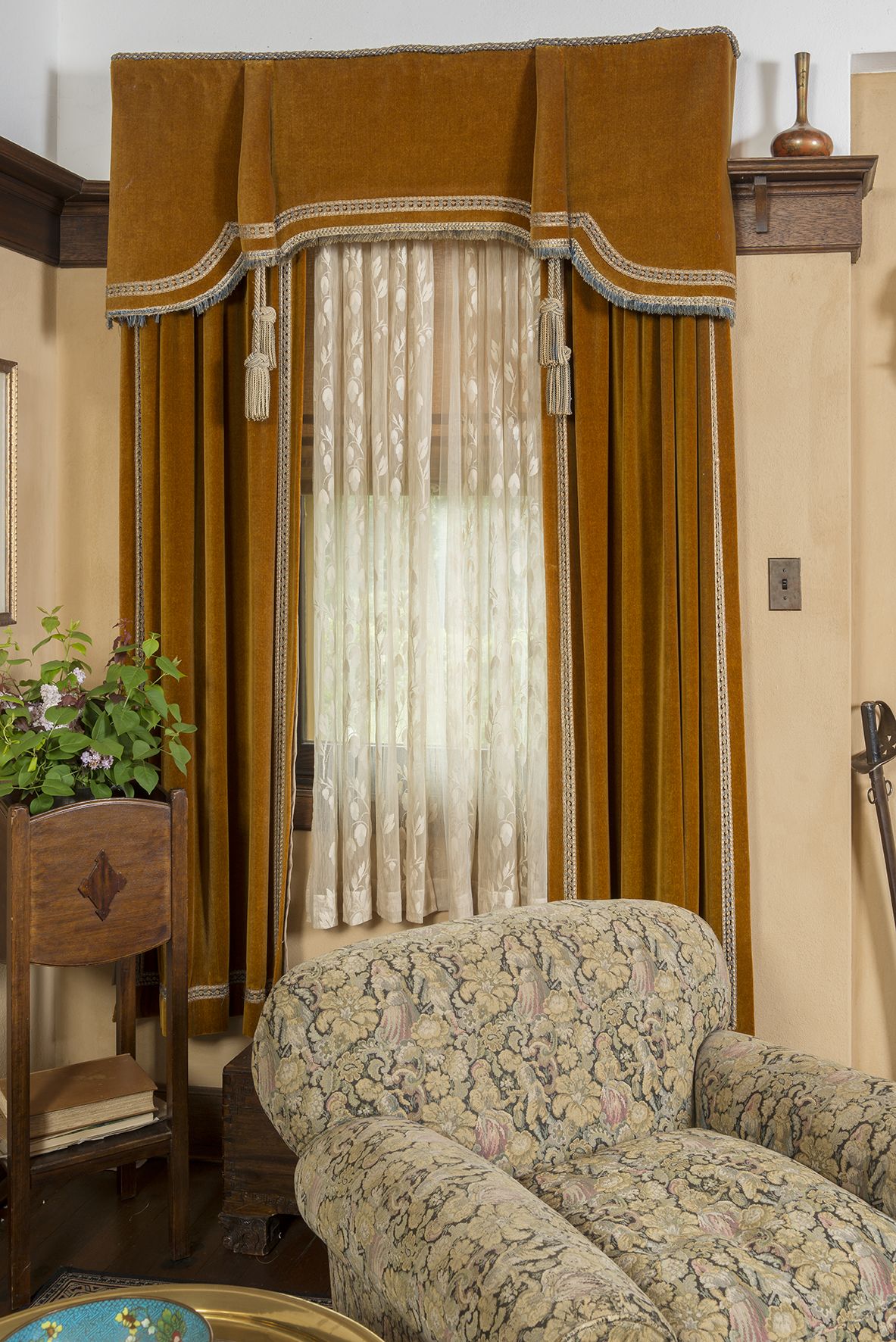
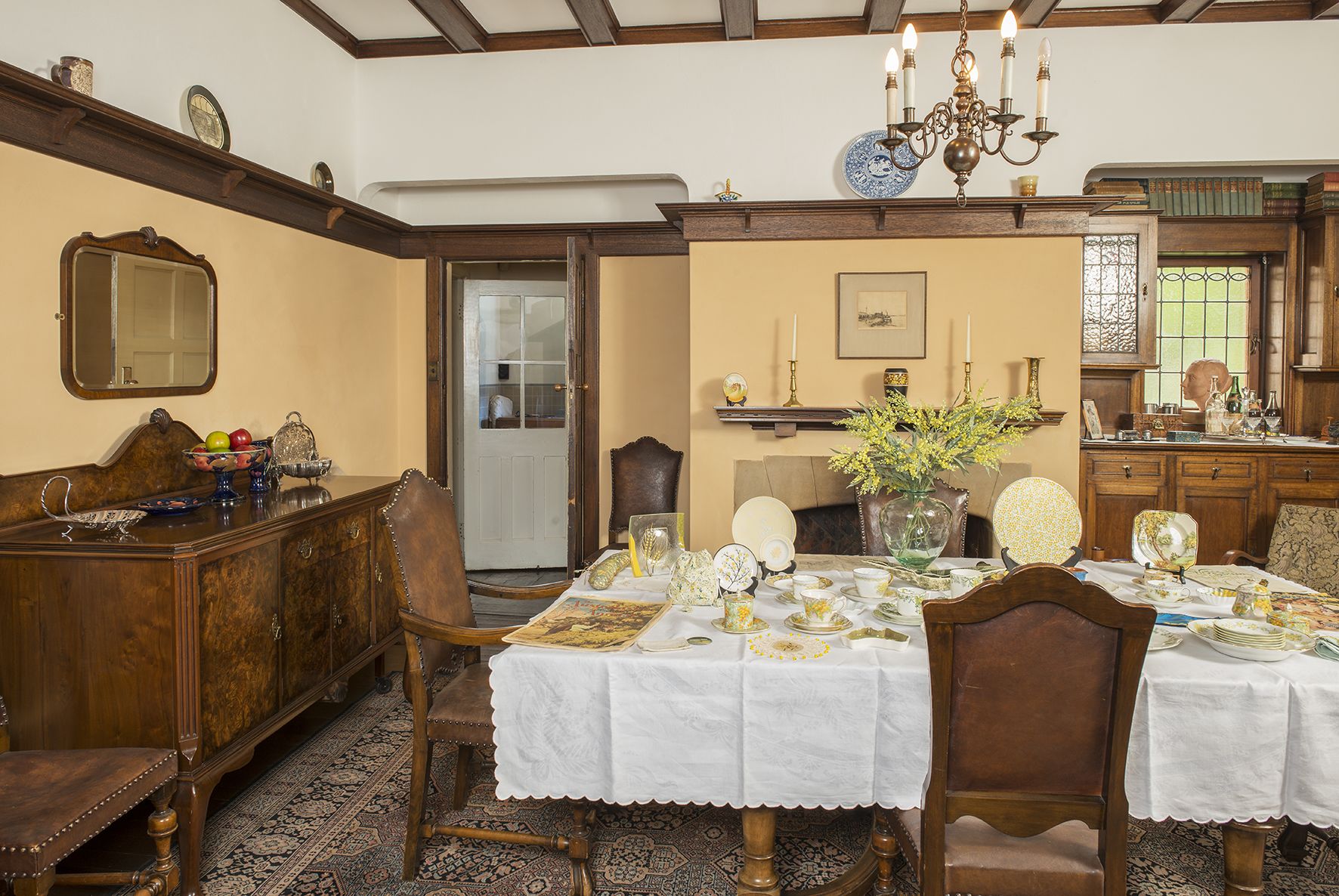
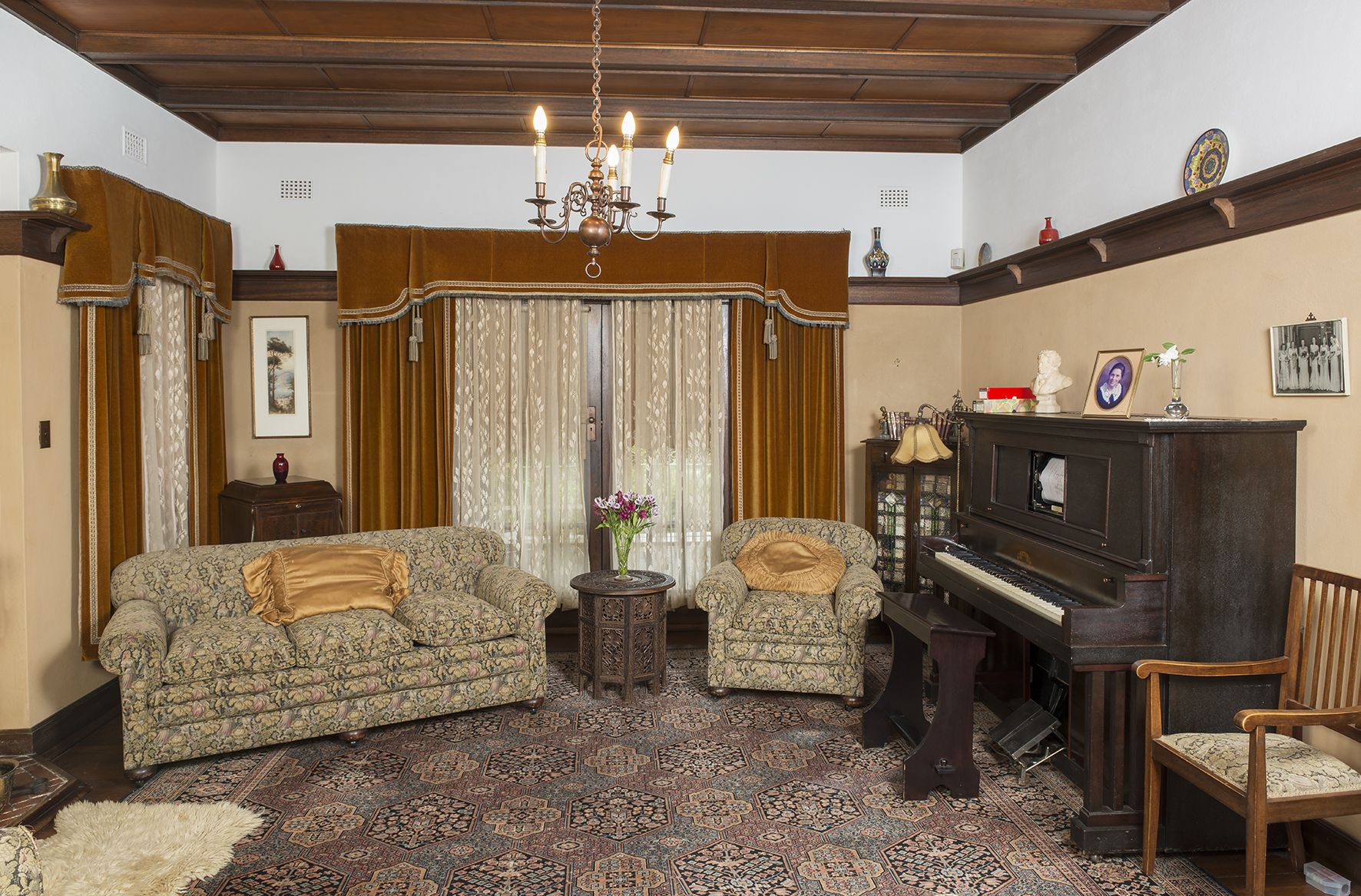

Not everything was perfect, however.
Mrs Calthorpe always claimed that the dining table was not the one she had selected.
And she regretted not having a paler border on the Persian-patterned Wilton carpets in the sitting room, dining room, hall and passage.
But Mrs Calthorpe must have been very happy overall with her purchases because the family never replaced their furniture collection after they moved there in 1927.
Mrs Calthorpe was meticulous in her housekeeping, and apart from a momentary whim to engage interior designer Marion Hall Best to provide redecoration ideas, she decided that her original furnishing choices suited her family beautifully.
The collection is also important because interwoven through the furniture collection are the family’s personal items.
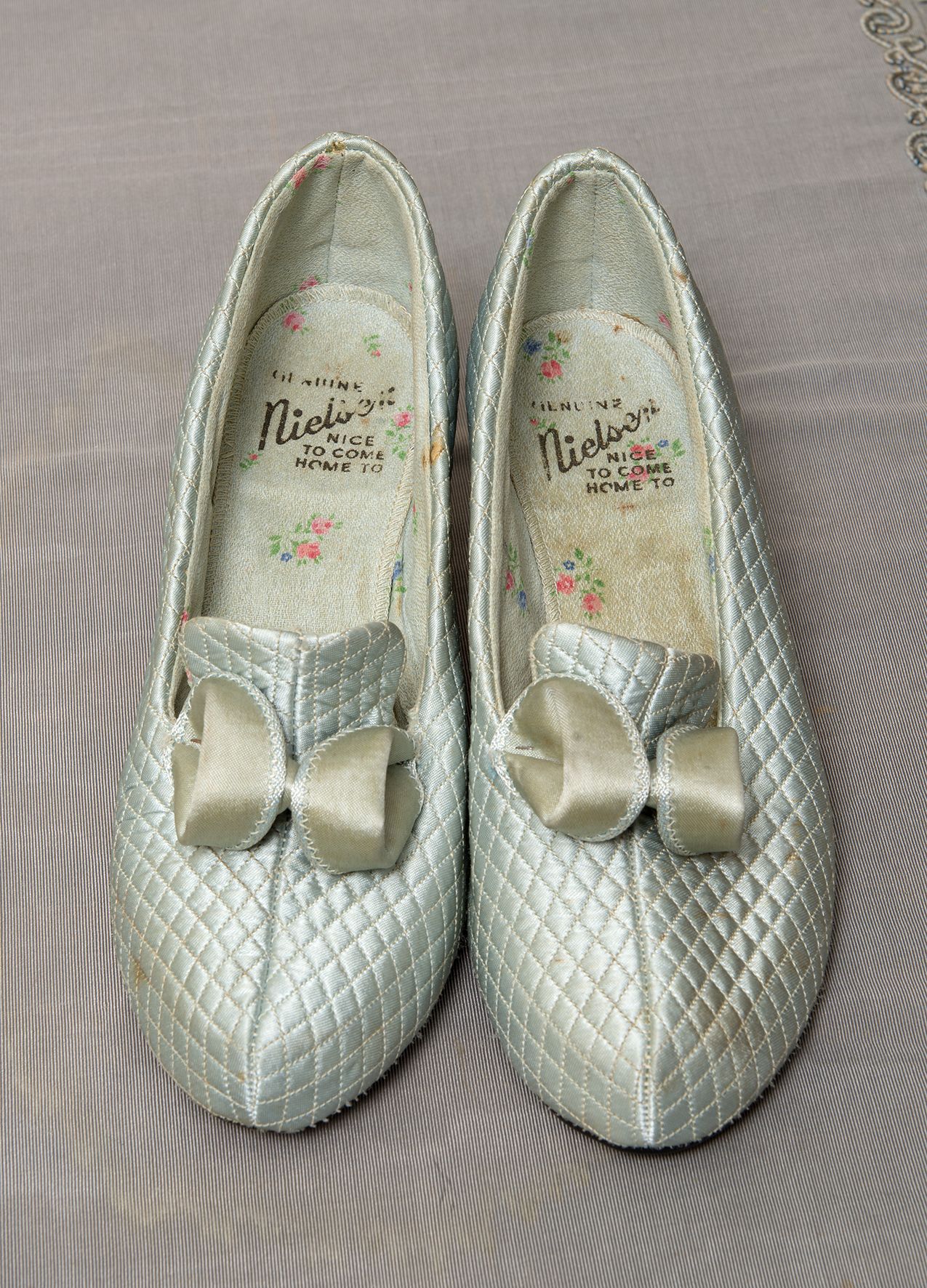
Slippers belonging to Della Calthorpe, ACT Historic Places collection
Slippers belonging to Della Calthorpe, ACT Historic Places collection
We have the pianola and music rolls that were the centre of the family’s entertainment.
There is the radio which Mr Calthorpe set his routine around.
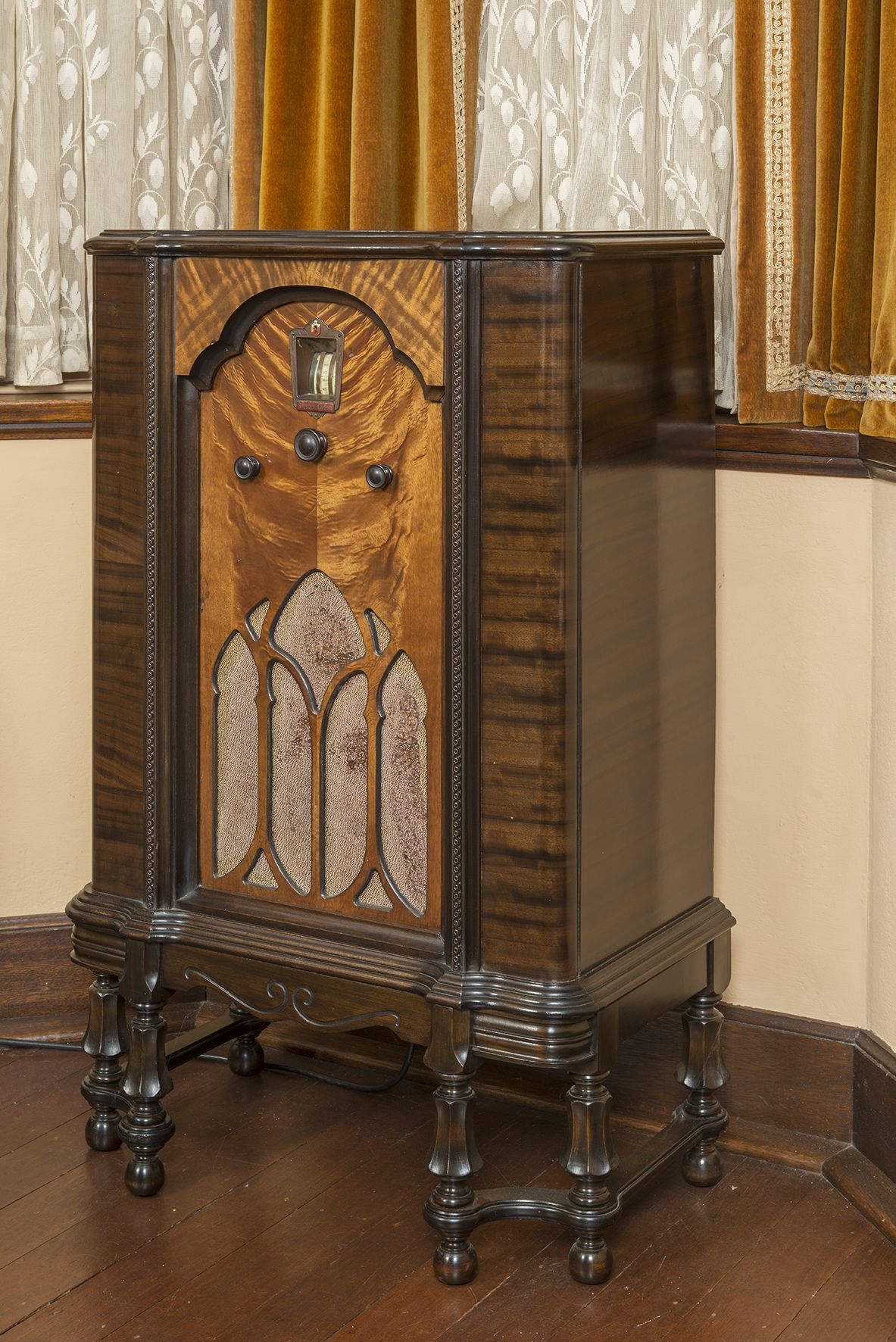
A radiogram enjoyed by the Calthorpe family in the dining room, ACT Historic Places collection
A radiogram enjoyed by the Calthorpe family in the dining room, ACT Historic Places collection
The kitchen reflects the changing domestic technology during the 20th century, from the wood fire Metters stove to the electric Kooka stove that never achieved the same quality of cooking and was only used in emergencies.
In Dawn’s bedroom, we see the books and hobbies of a girl growing up in Canberra.

A selection of books and toys belonging to the Calthorpe girls, ACT Historic Places collection
A selection of books and toys belonging to the Calthorpe girls, ACT Historic Places collection
Her love for reading (including Seven Little Australians), her obsession with Shirley Temple and Hollywood movies, her collection of badges, and the tea parties for her dolls – including poor John who got very sunburnt after being left in the sun on a beach during a family holiday to Narooma on the NSW south coast.
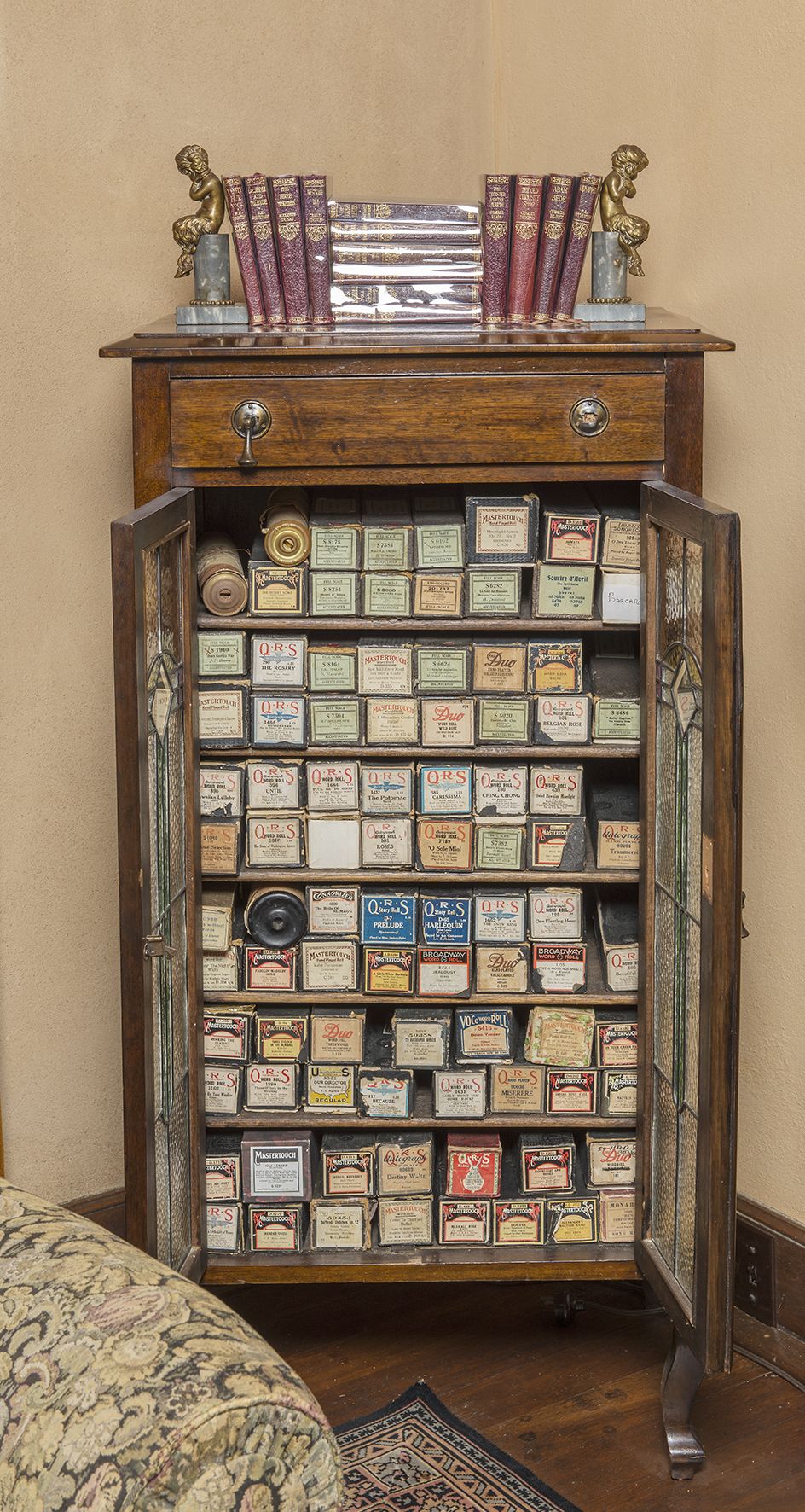
Pianola rolls, Calthorpes House
Pianola rolls, Calthorpes House

The Kooka stove, Calthorpes House
The Kooka stove, Calthorpes House

Dawn's book collection
Dawn's book collection
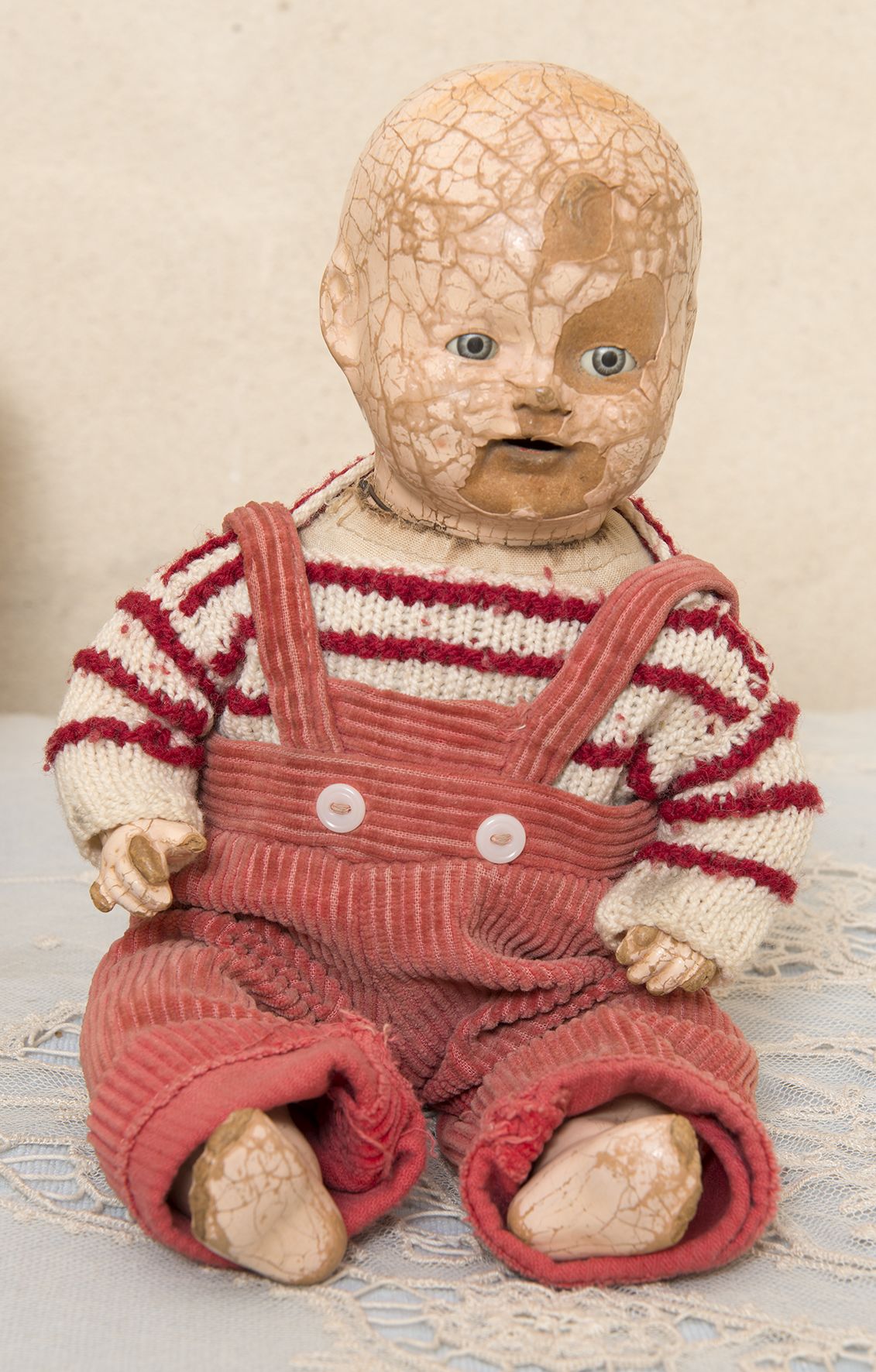
Dawn's beloved doll, John
Dawn's beloved doll, John
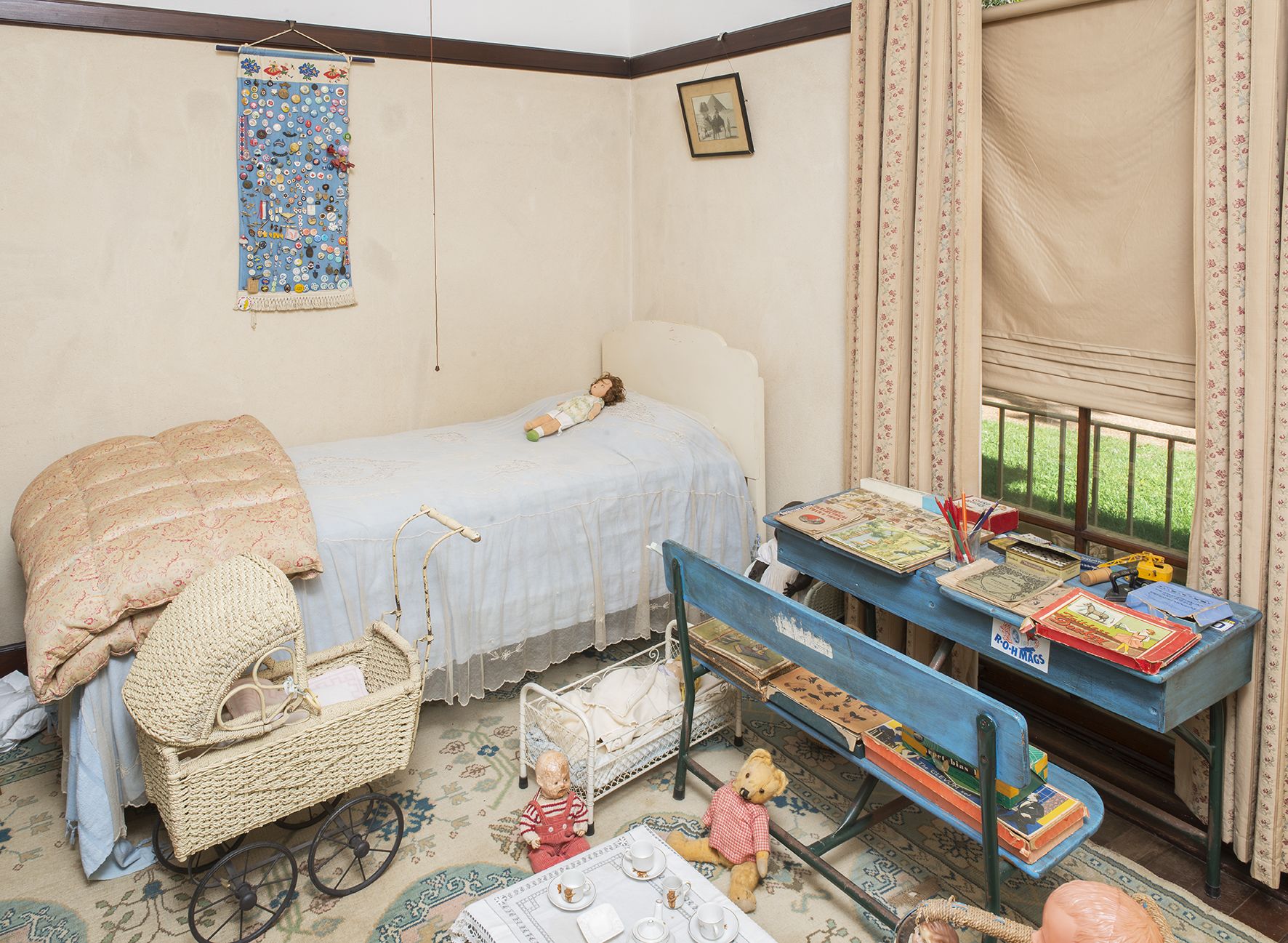
Dawn's room, Calthorpes House
Dawn's room, Calthorpes House

Dawn's badge collection
Dawn's badge collection
In this new home of the Calthorpes, there were still references to the past – with a separate bedroom for the live-in maid located off the kitchen.
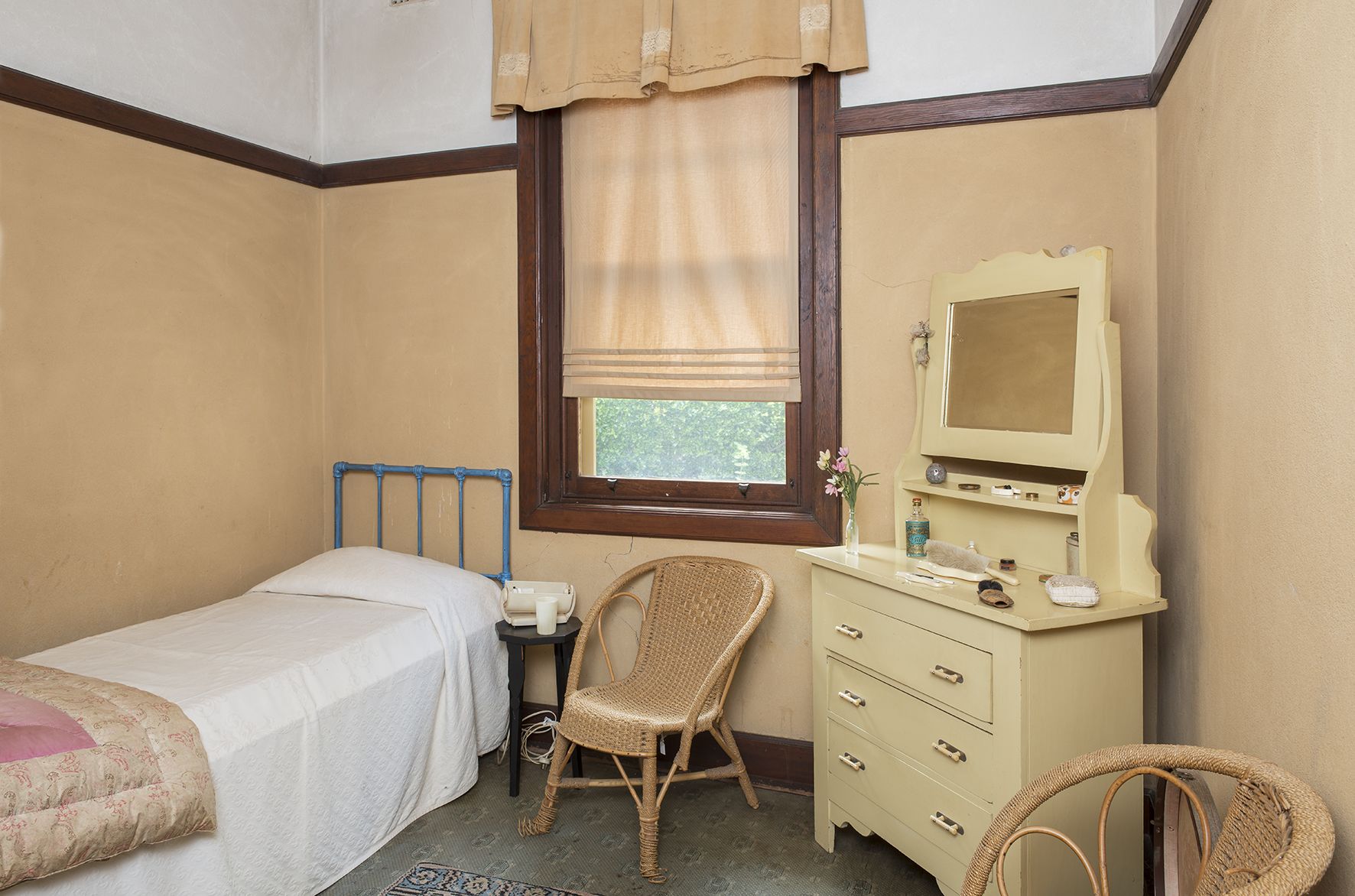
The maid's room, Calthorpes House
The maid's room, Calthorpes House
But the new house also included a very modern layout with separate living, dining, food preparation, washing and sleeping areas, all fully wired and connected to electricity.
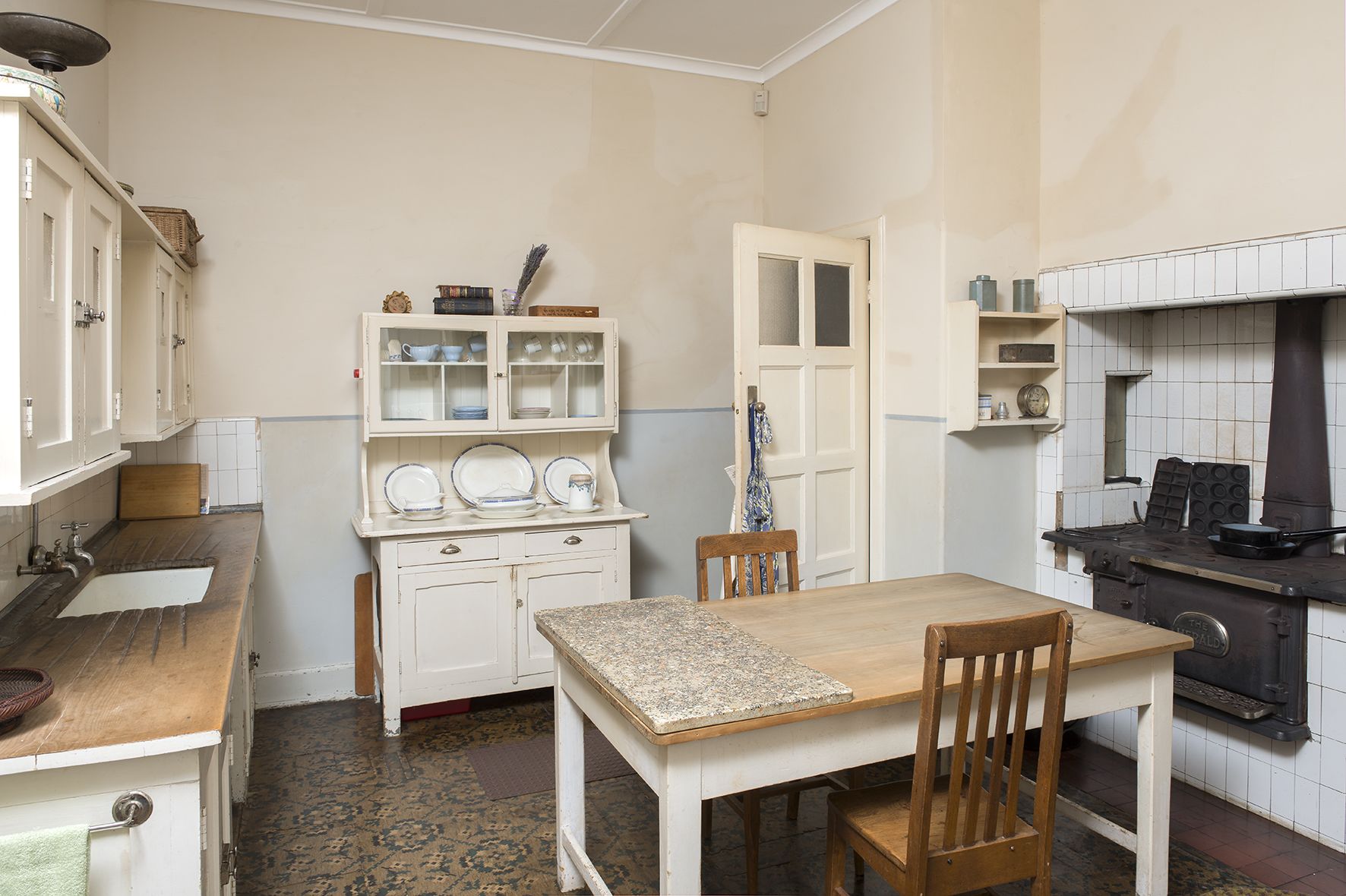
The kitchen, Calthorpes House
The kitchen, Calthorpes House
And the bathroom was the epitome of modernity, located inside the house with modern plumbing and tiled in white, the ultimate symbol of hygiene.
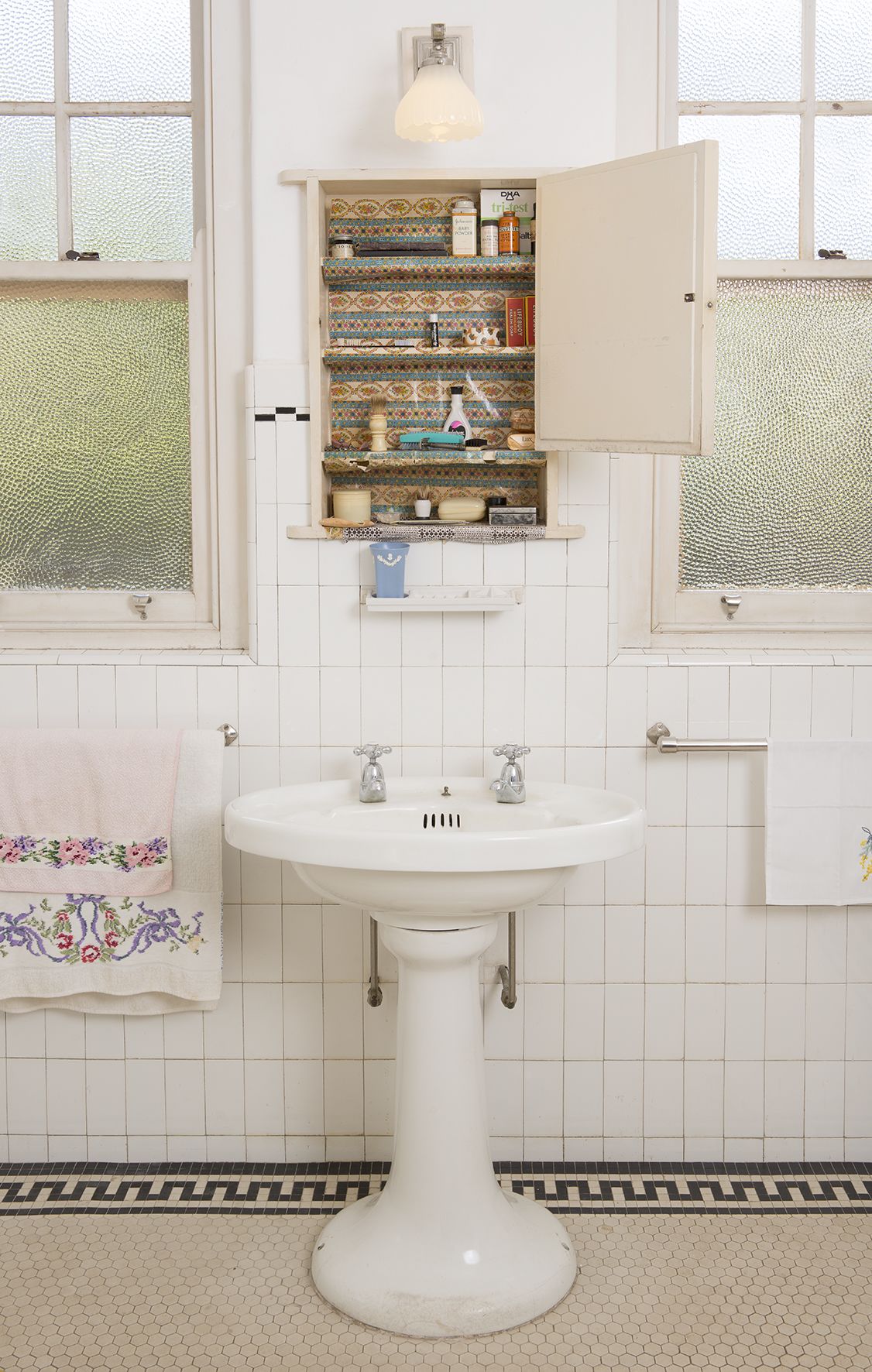
The bathroom, Calthorpes House
The bathroom, Calthorpes House
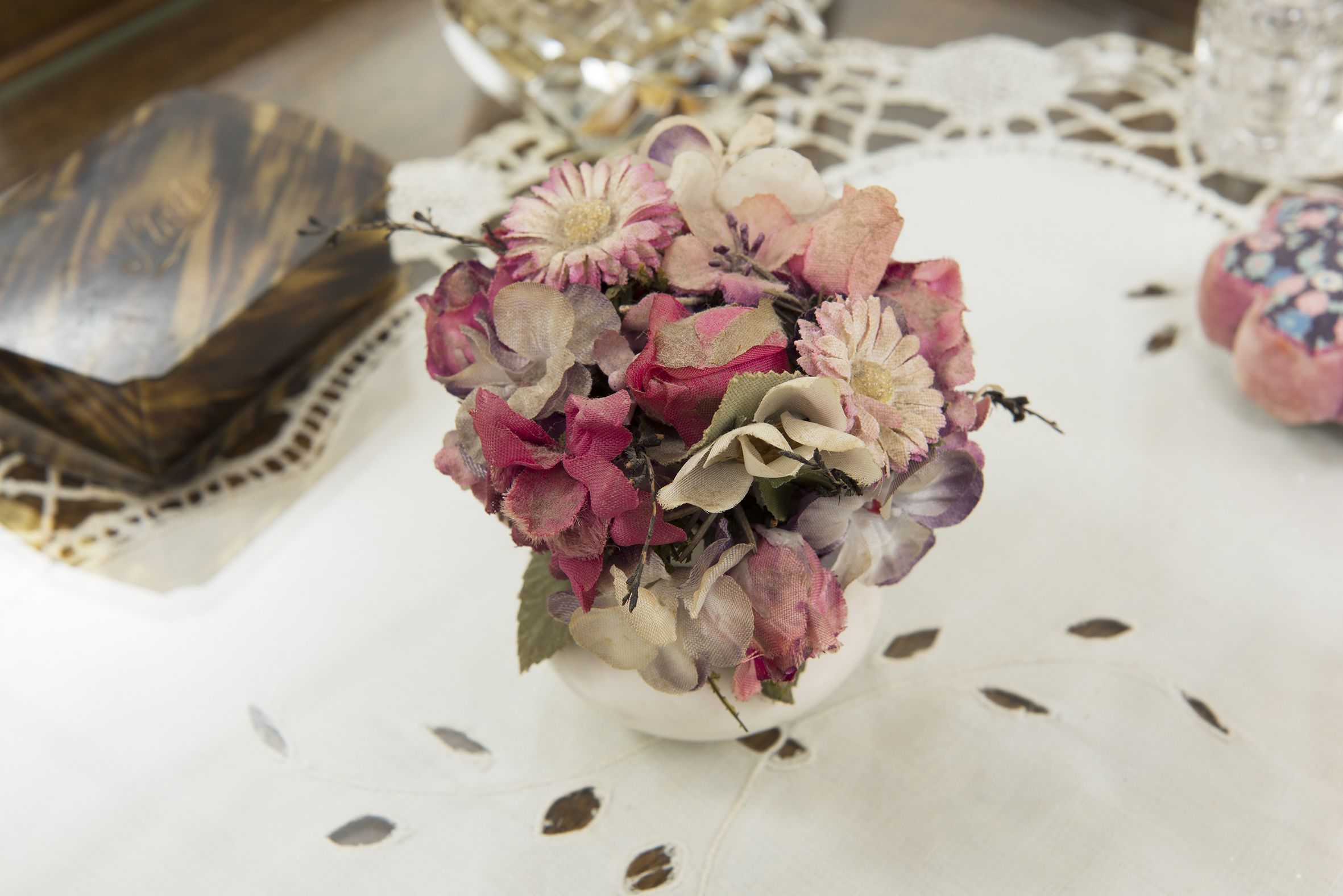
After the experiences of WWI, Canberra did offer a bright future for the Calthorpe family and the 1920s was a blissful period for them.
In the 1930s, as the Depression began to bite and other families around them leased their houses or sold up, the Calthorpes held firm, determined to stay in their beloved home.
As Dawn recalls, 'Some adults sent from other cities struggled with the challenges of 1920s Canberra, but I don't think you'd find a happier, more fun place to grow up as a kid.
'Those early years here were some of the happiest days of my life - playing hopscotch on the back porch, skipping in the garden, collecting wild flowers from Red Hill and catching yabbies in the Molonglo River.'
For Harry and Della Calthorpe, Canberra was the answer to their hopes and dreams of an exciting new world. The house at 24 Mugga Way was just the beginning.
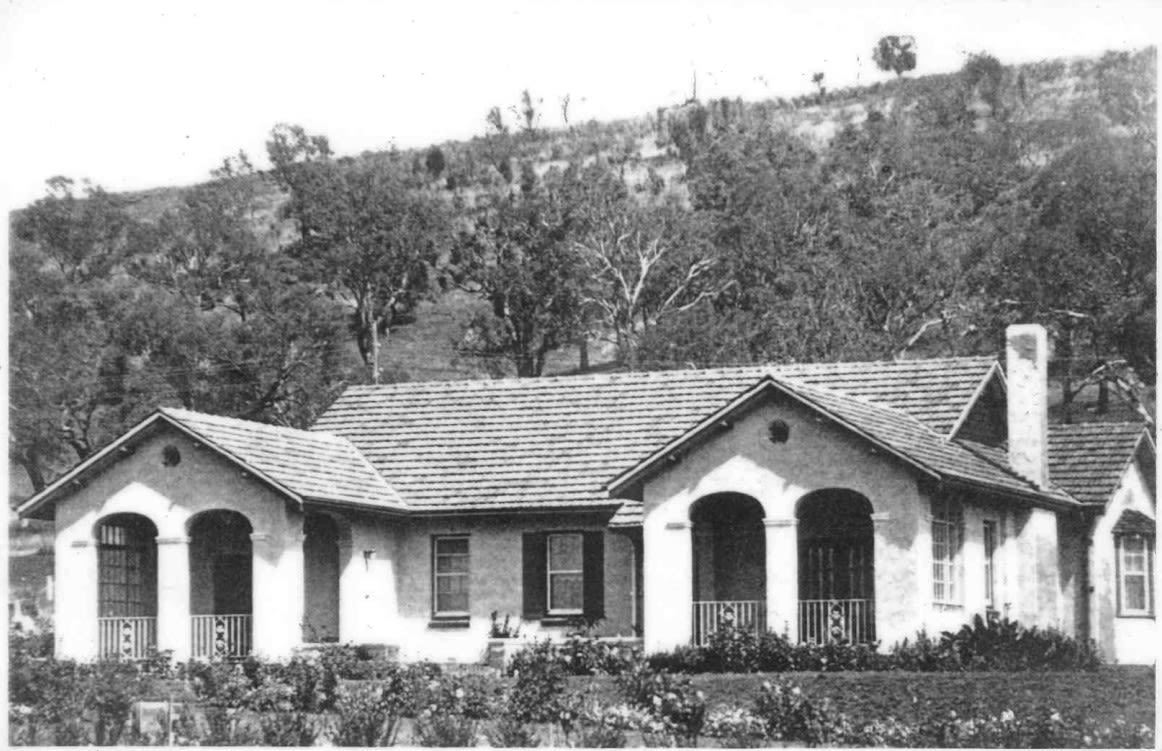
24 Mugga Way, Red Hill, ACT Historic Places collection
24 Mugga Way, Red Hill, ACT Historic Places collection
We acknowledge the Ngunnawal peoples as the Traditional Custodians of the Canberra region.
The region has always been an important meeting place and significant to other Aboriginal groups who have celebrated culture through the arts and cultural practices for tens of thousands of years.
Writer and researcher: Dr Anna Wong, Director of ACT Historic Places
Calthorpes House photography: Brenton McGeachie
Additional research and digital production: Cathy Pryor, Curator of Exhibitions and Research, ACT Historic Places
Background archival images:
Early foundations of Canberra, Fairfax archive of glass plate negatives, circa 1920s, courtesy National Library of Australia, nla.obj-163114509
Plan for Residence Mugga Way Red Hill Canberra for JH Calthorpe Esq, by Oakley & Parkes, Architect, December 20 1926, from a collection of architectural drawings for the firm Oakley & Parkes and associated practices, courtesy State Library Victoria, LTAD227/64
Sketch map of the Federal Territory Commonwealth of Australia, compiled and drawn by Home and Territories Department, Lands and Survey Branch, Melbourne, 1920, courtesy State Library of NSW, FL10449288
Other archival images: National Library of Australia, State Library Victoria, State Library of NSW, Caroline Simpson Collection, Museums of History NSW
References:
Kingston B, 1994, Basket, Bag and Trolley - a history of shopping in Australia, Oxford University Press, Melbourne
Pollon F, 1989, Shopkeepers and shoppers - a social history of retailing in New South Wales from 1788, The Retailers Traders' Association of New South Wales
Waterhouse D, 2002, Chortles, Chores and Chilblains- cameos of childhood in Calthorpes' House, Canberra, ACT Historic Places
Webber K and Hoskins I with McCann J, 2003, What’s in Store? A history of retailing in Australia, Powerhouse Publishing in association with the New South Wales Heritage Office

